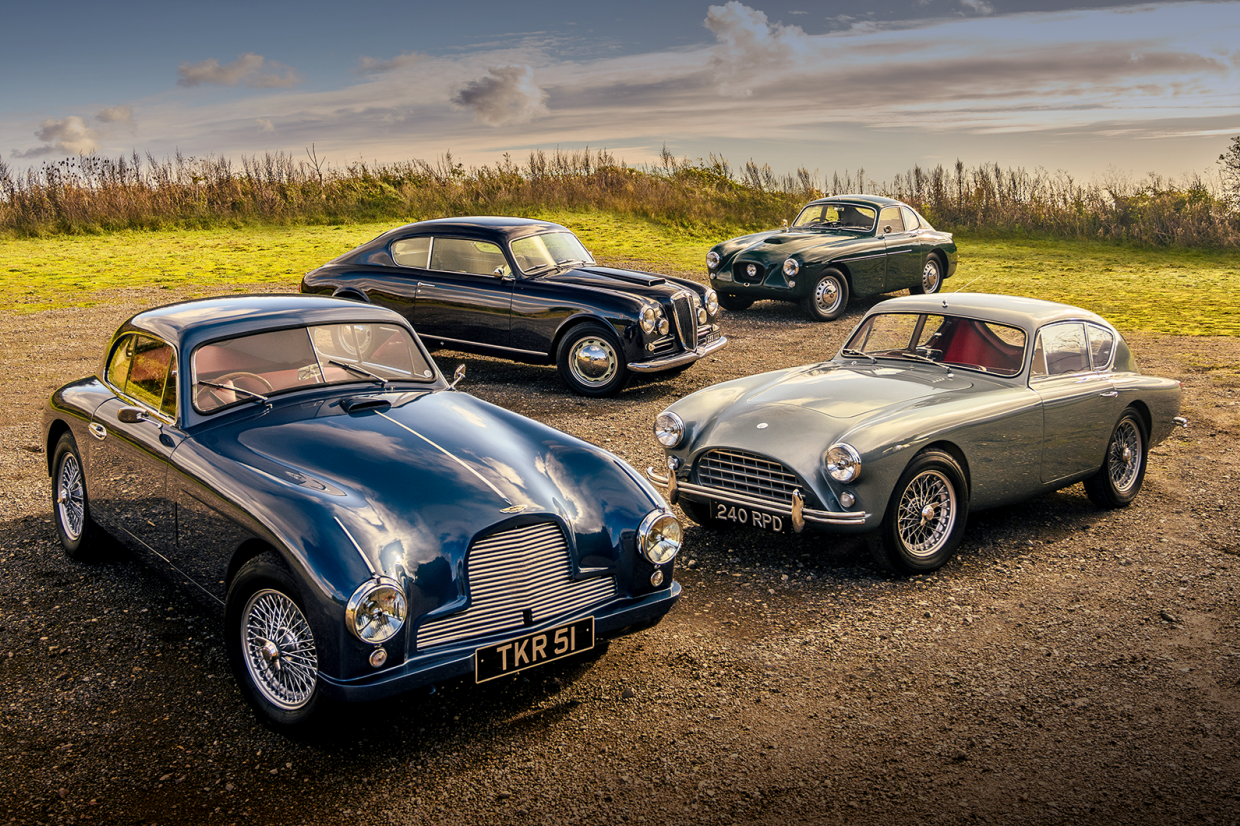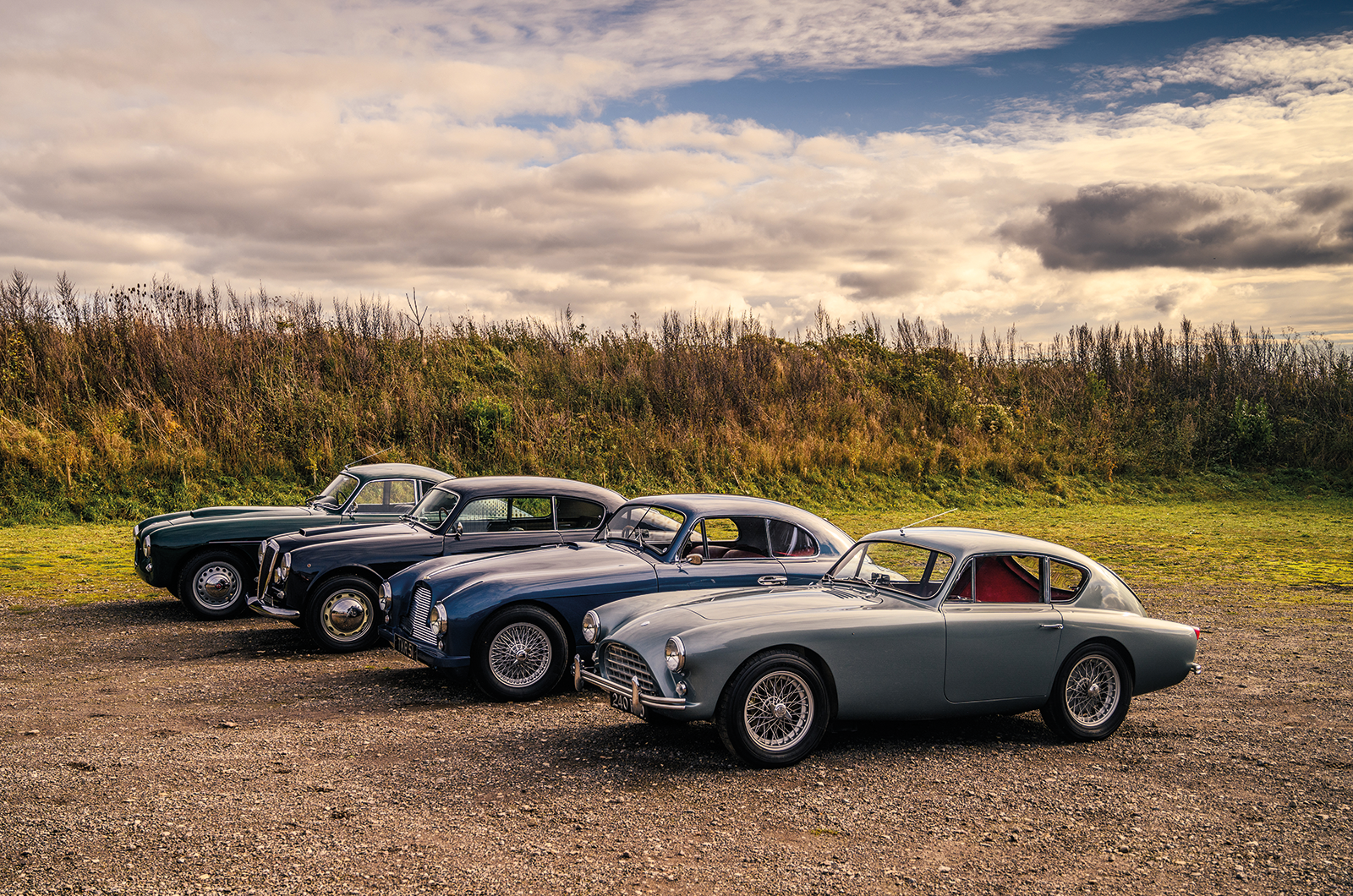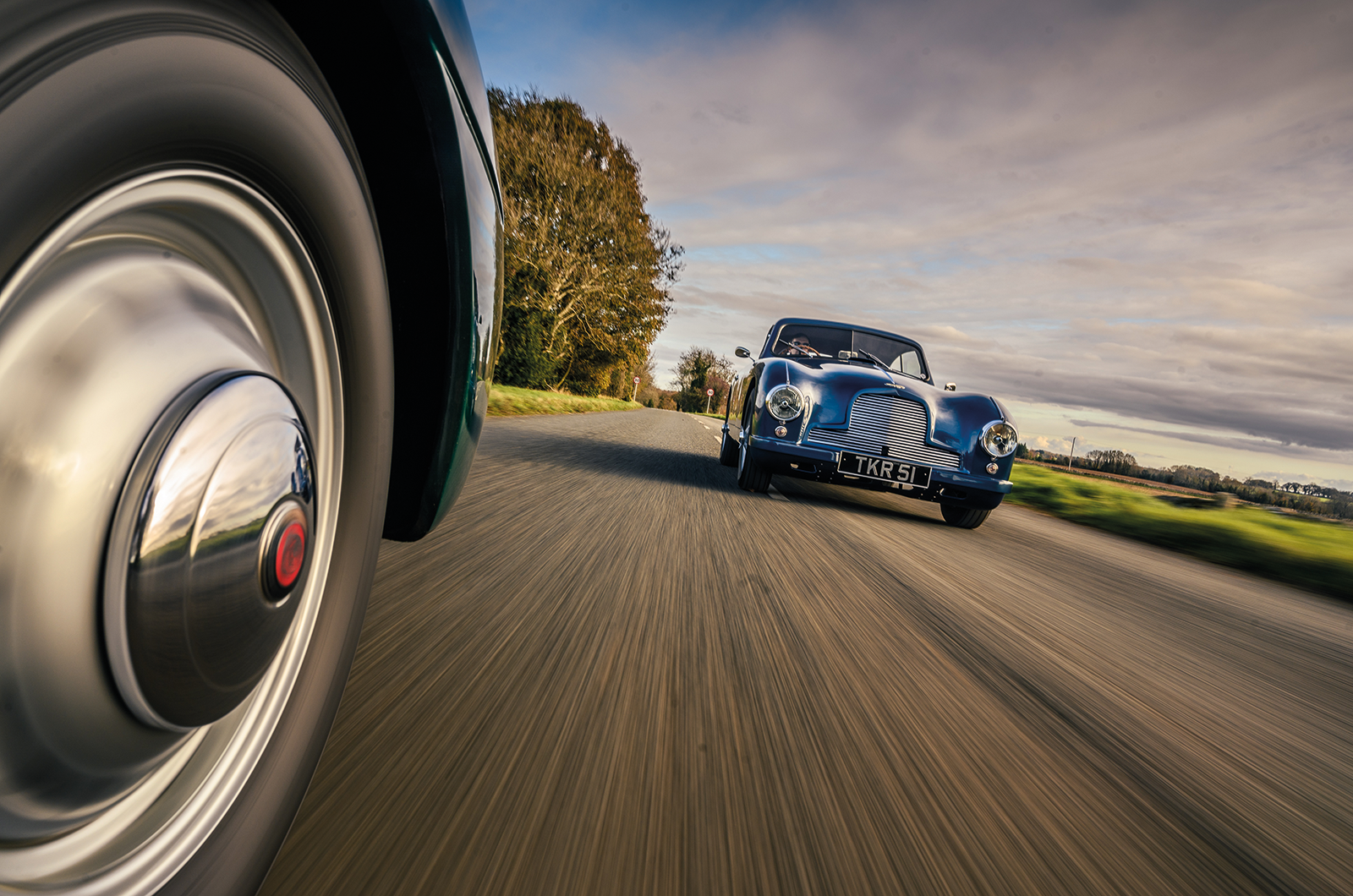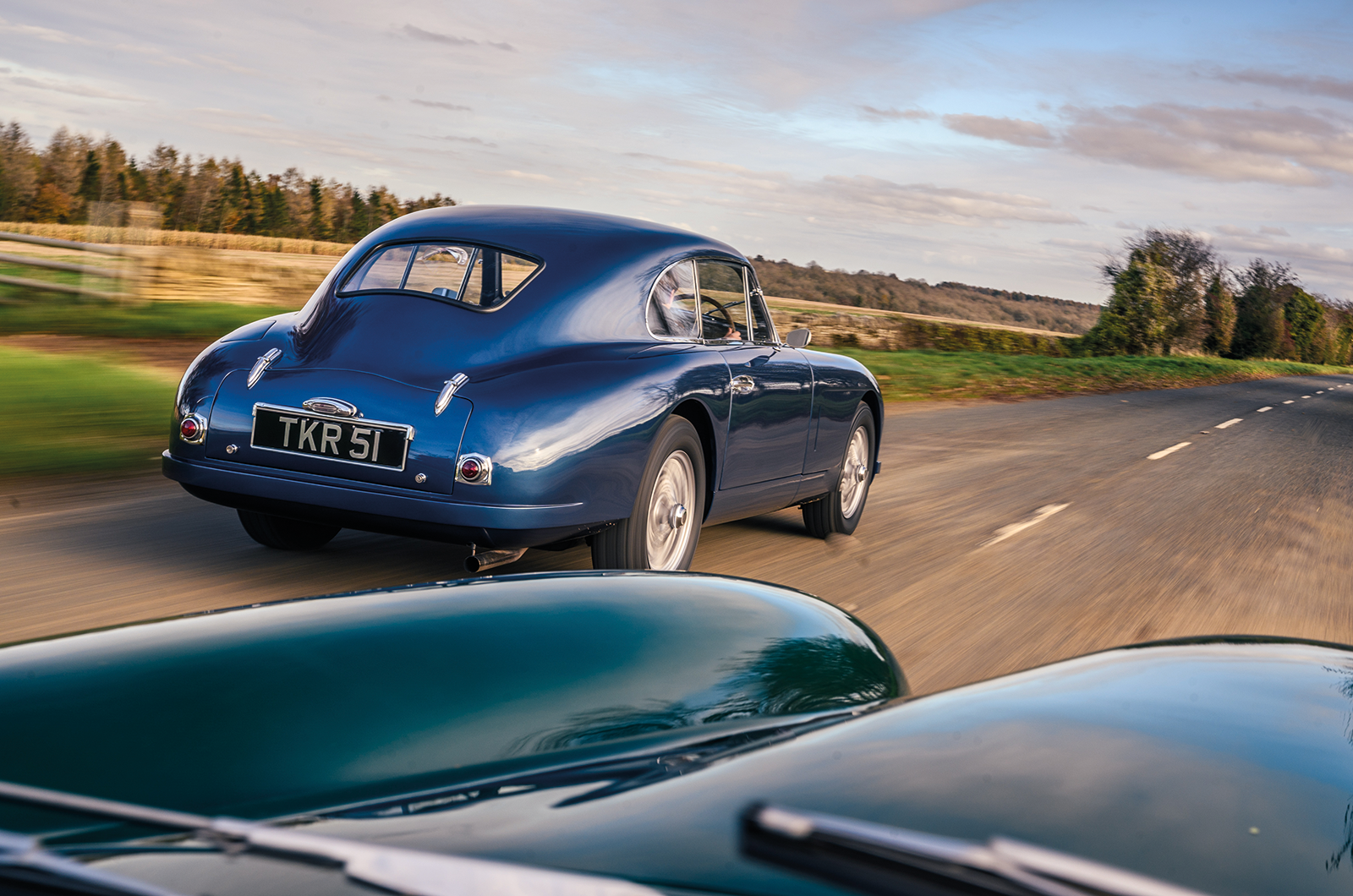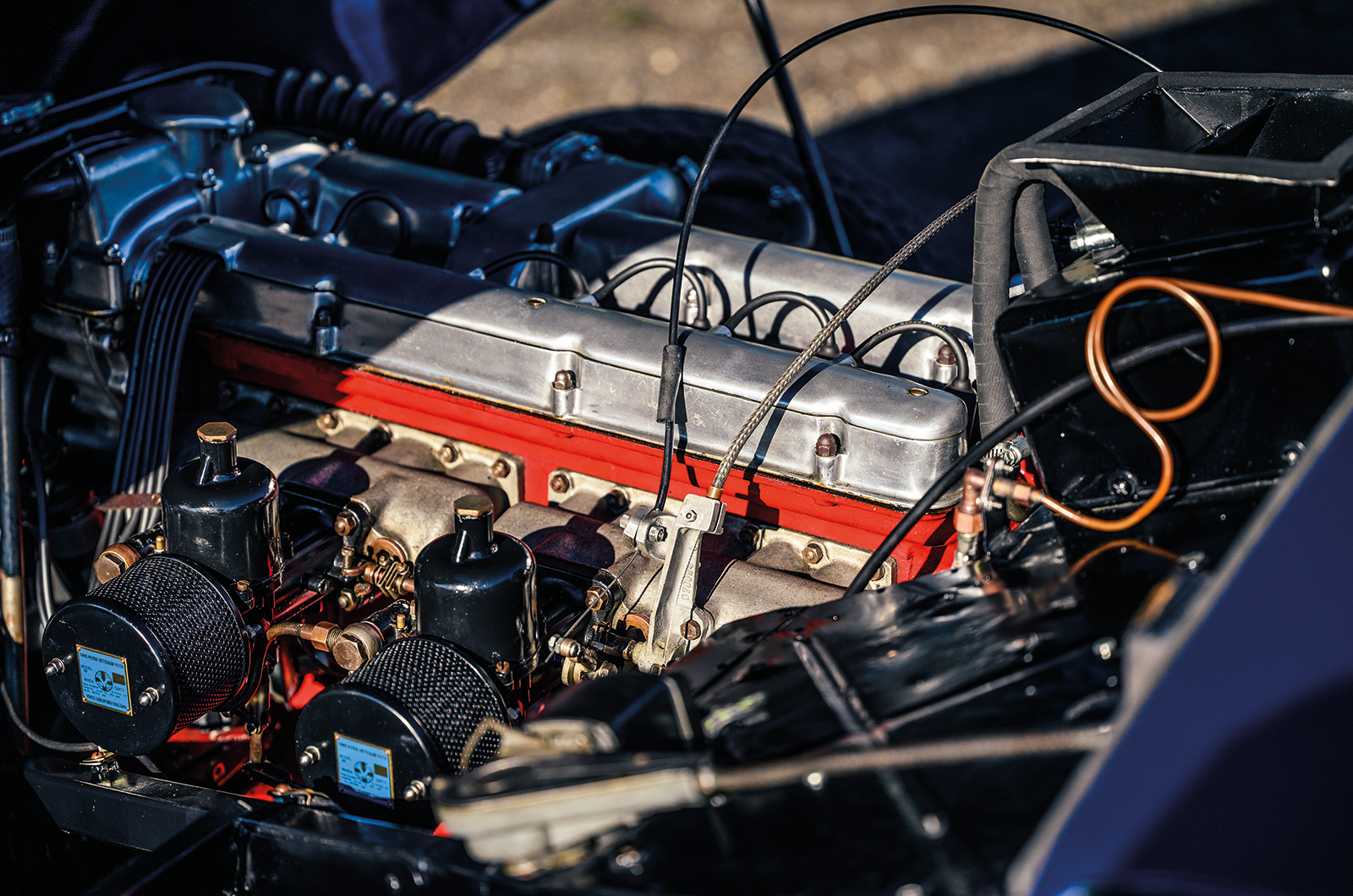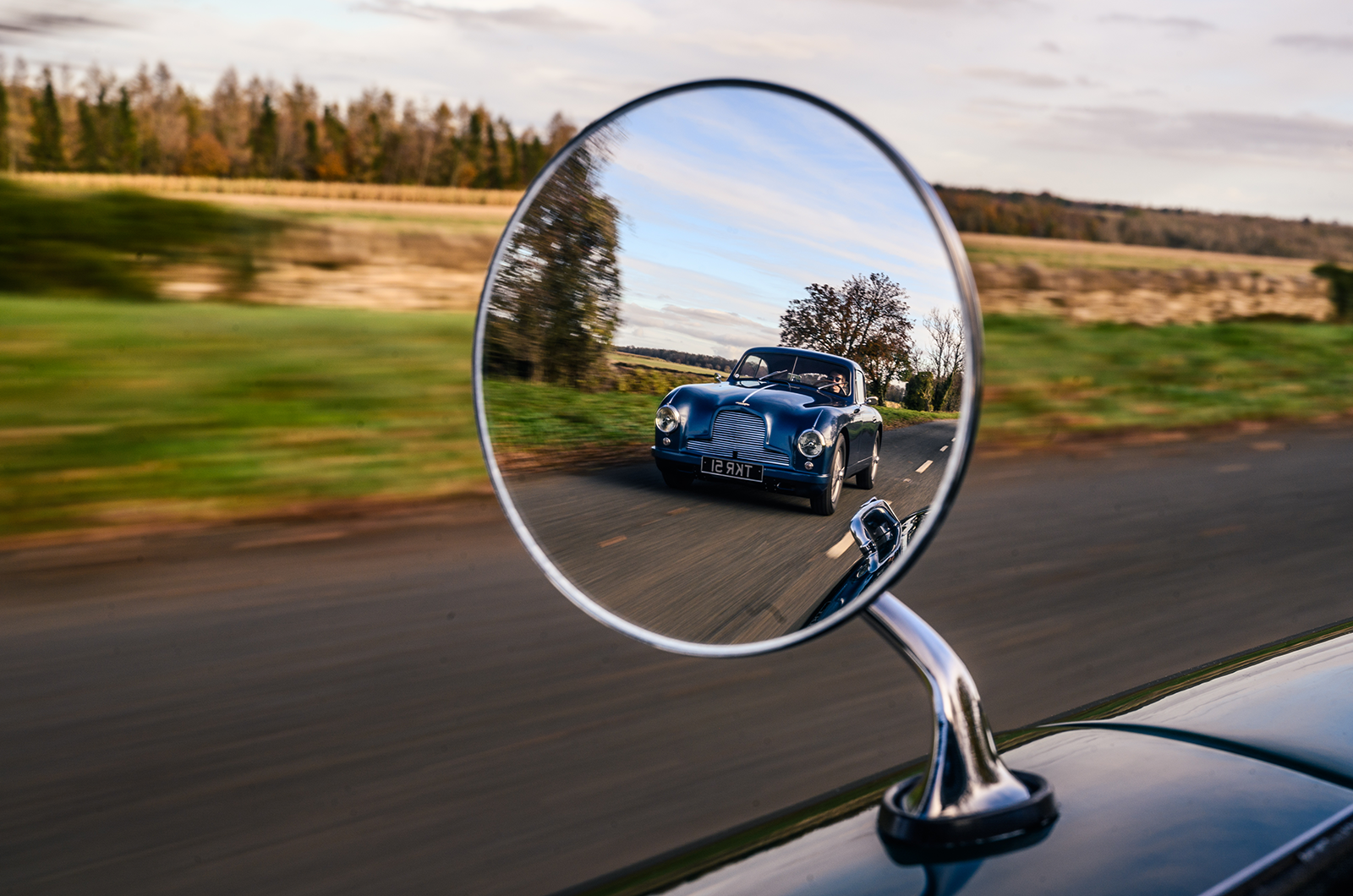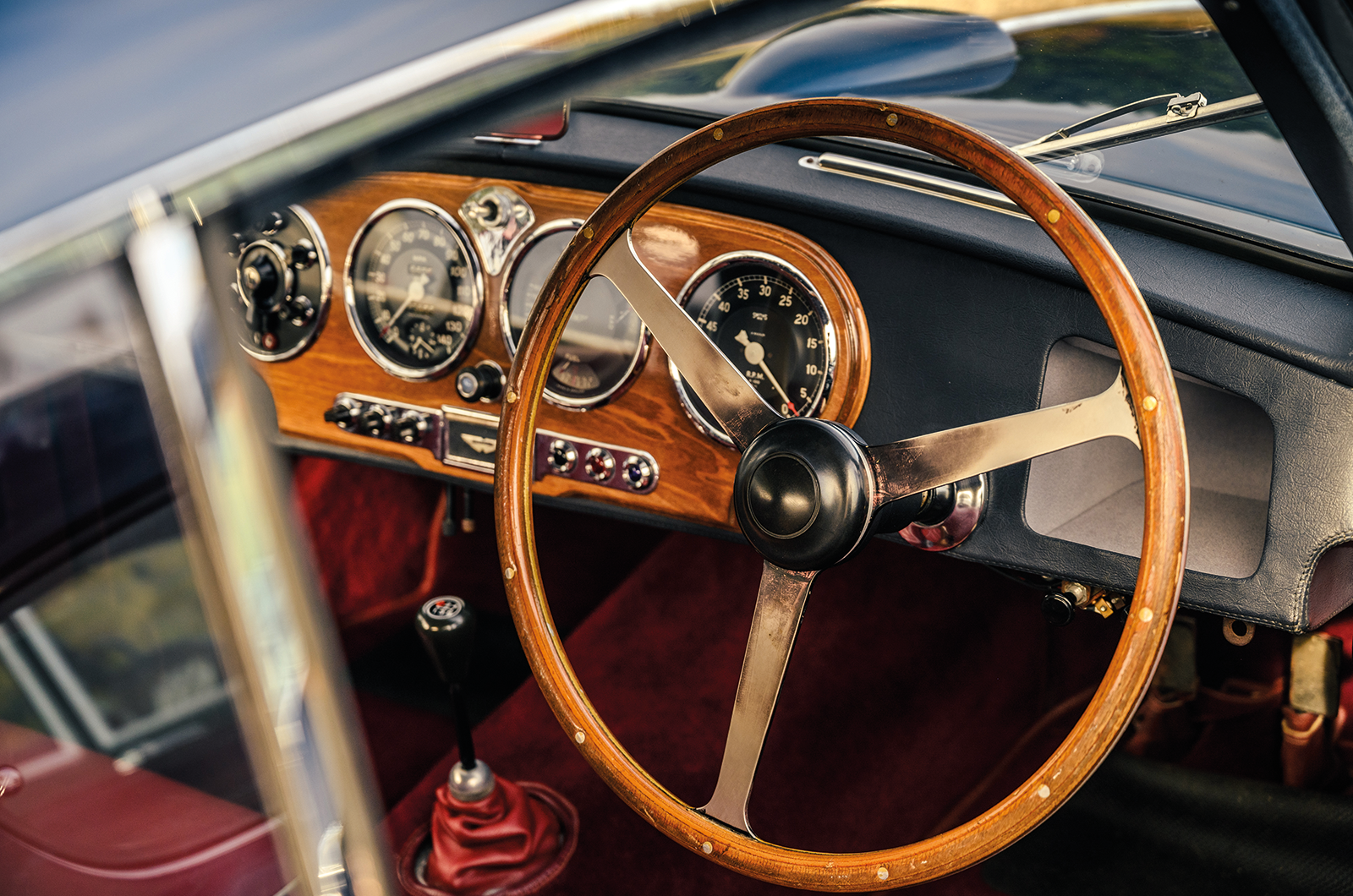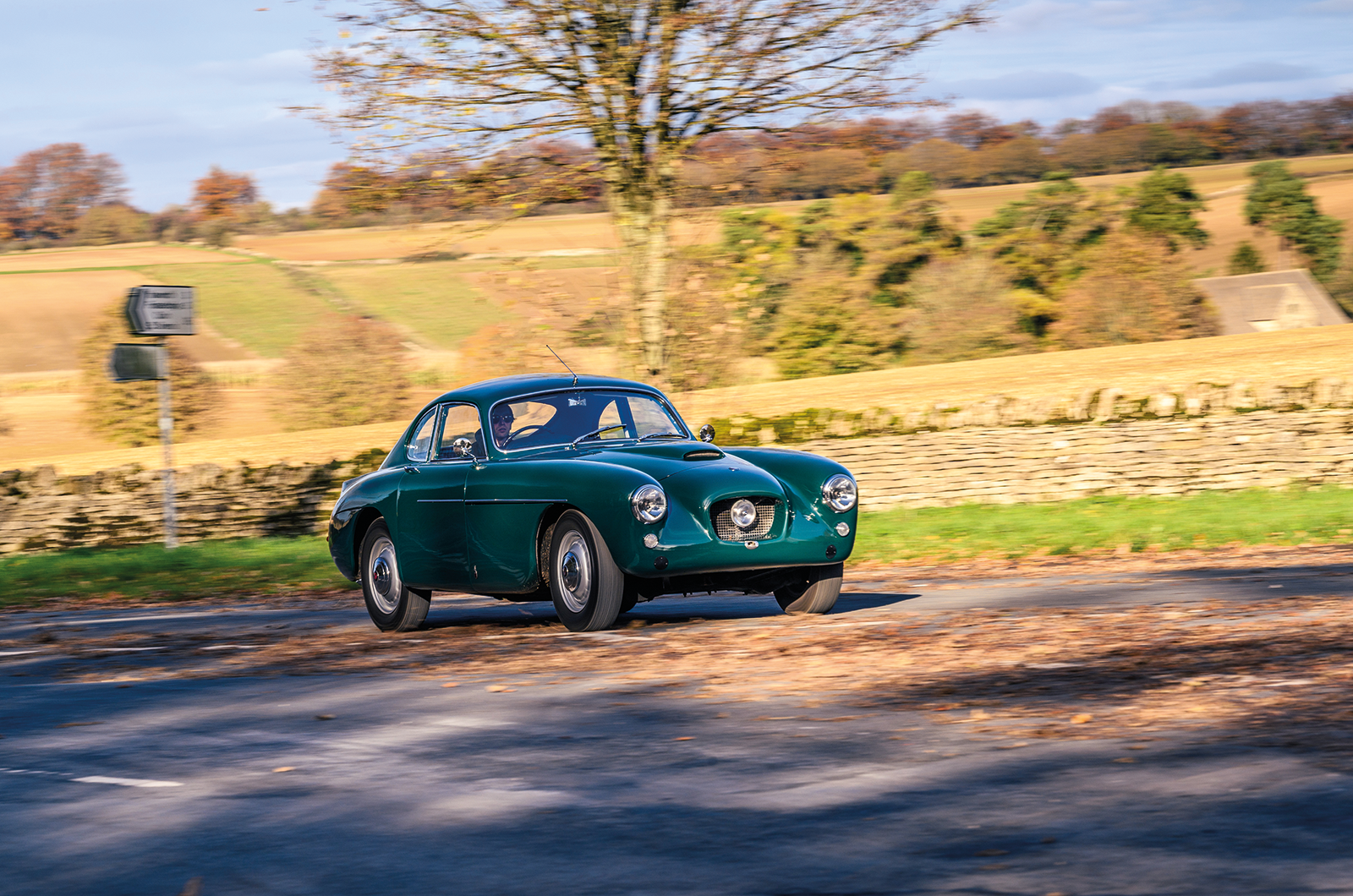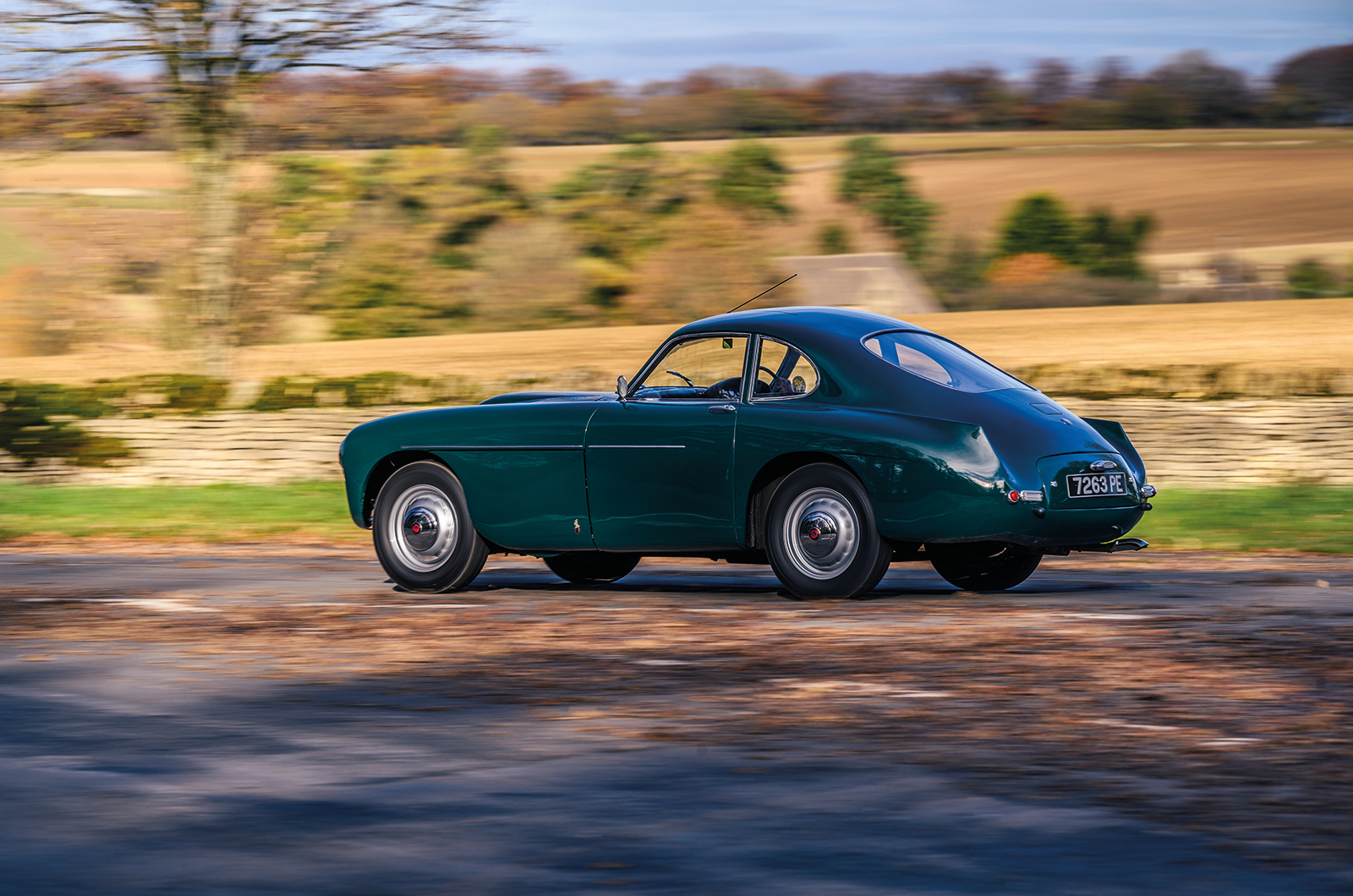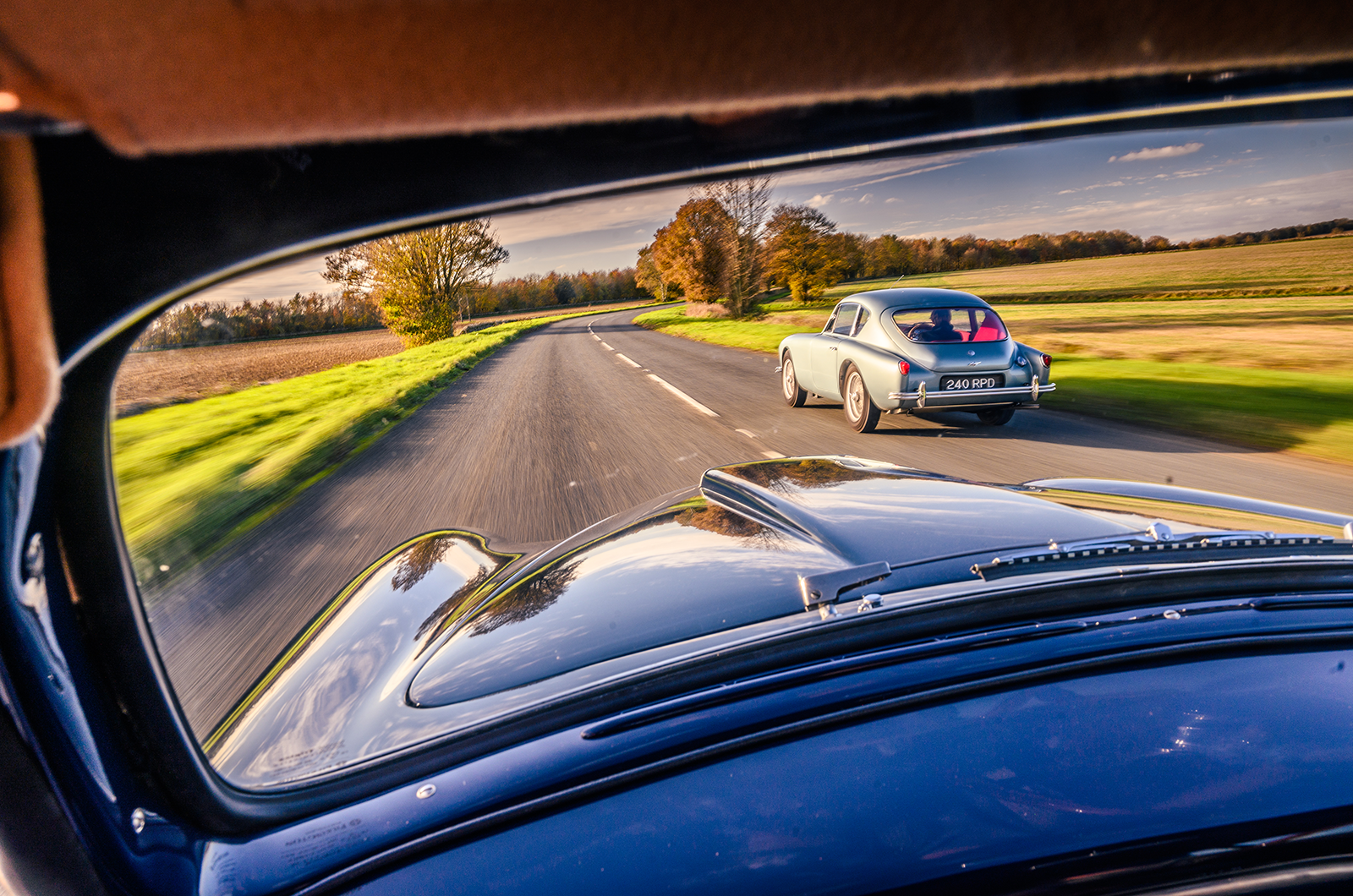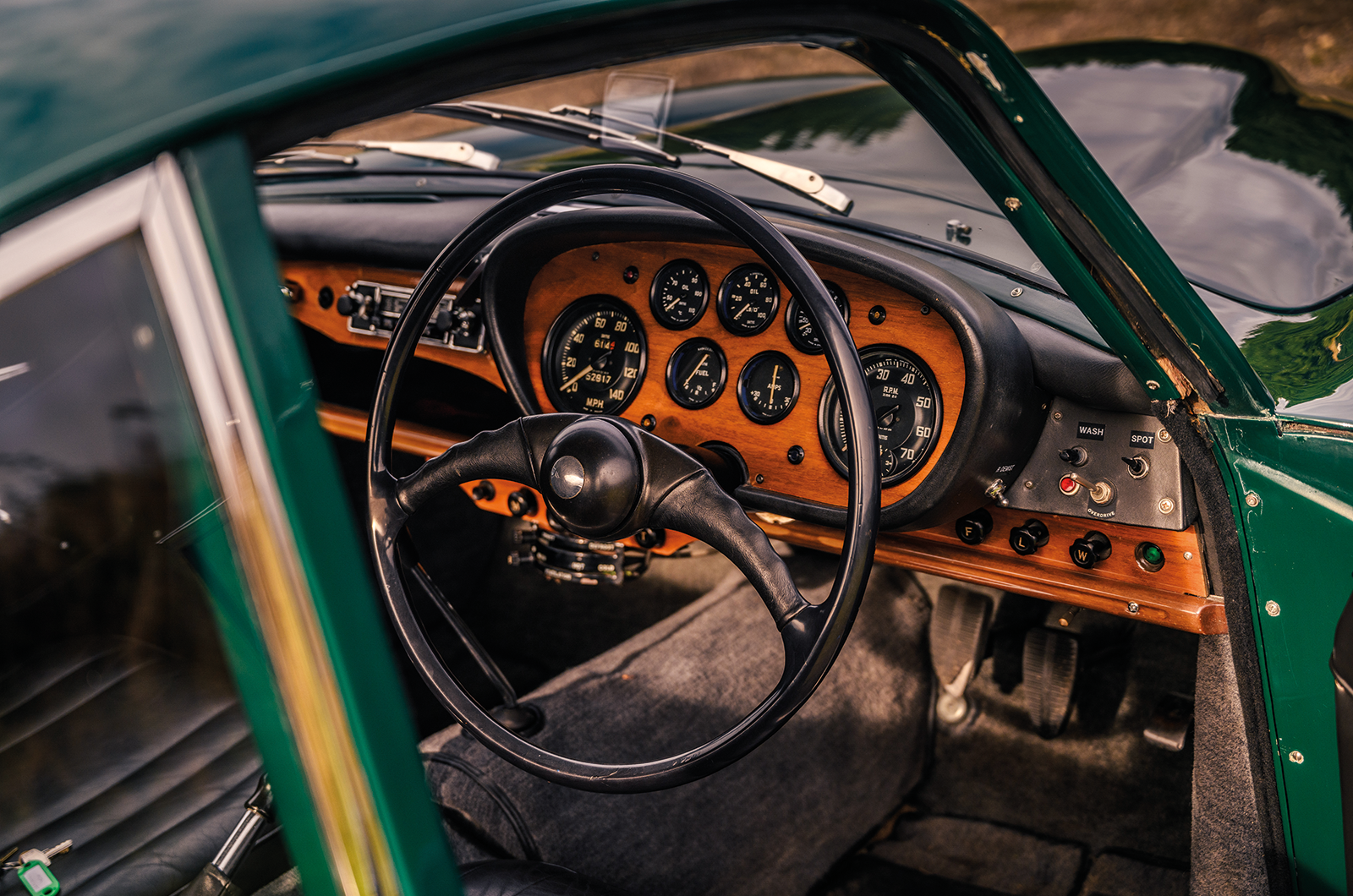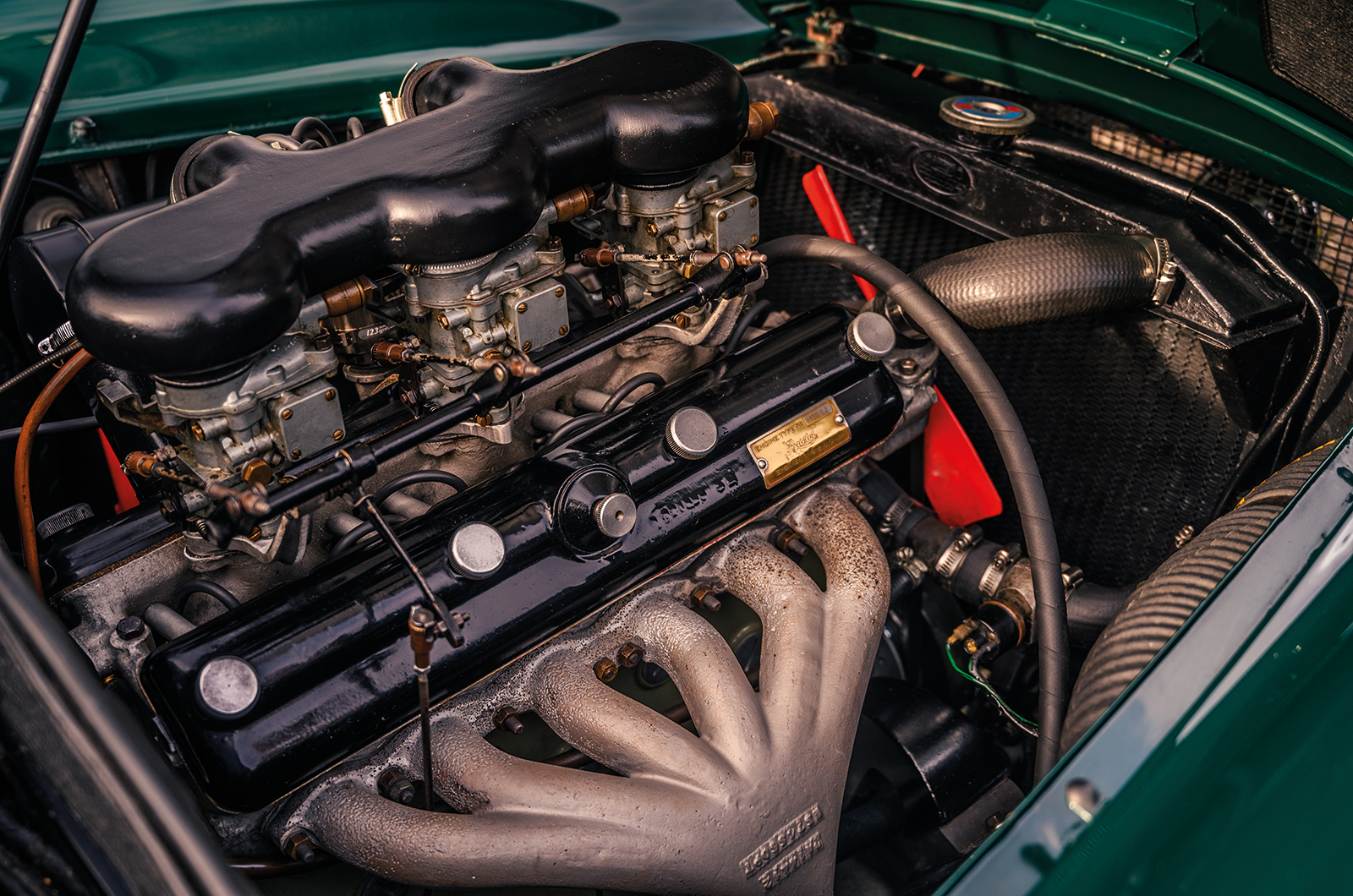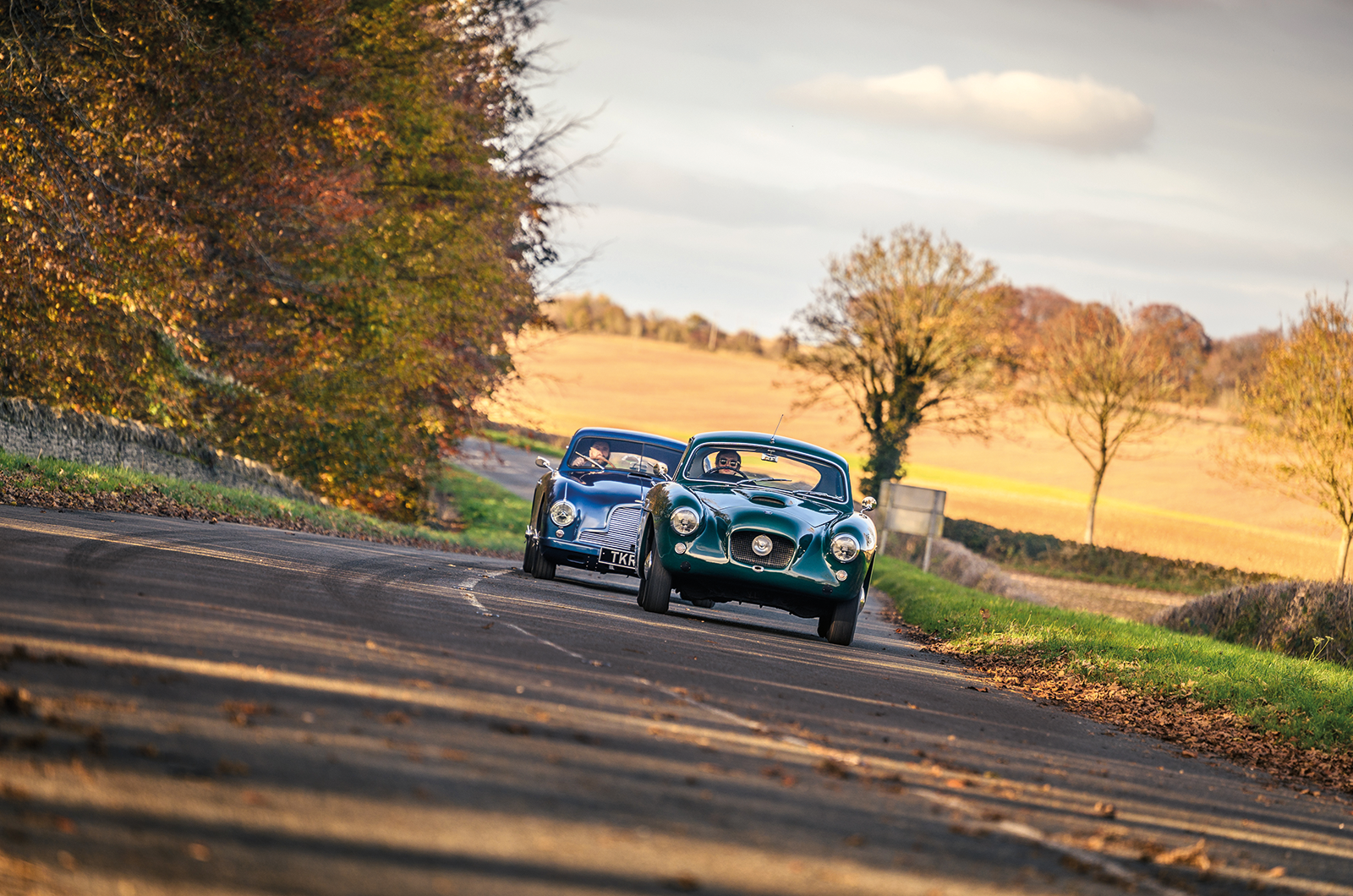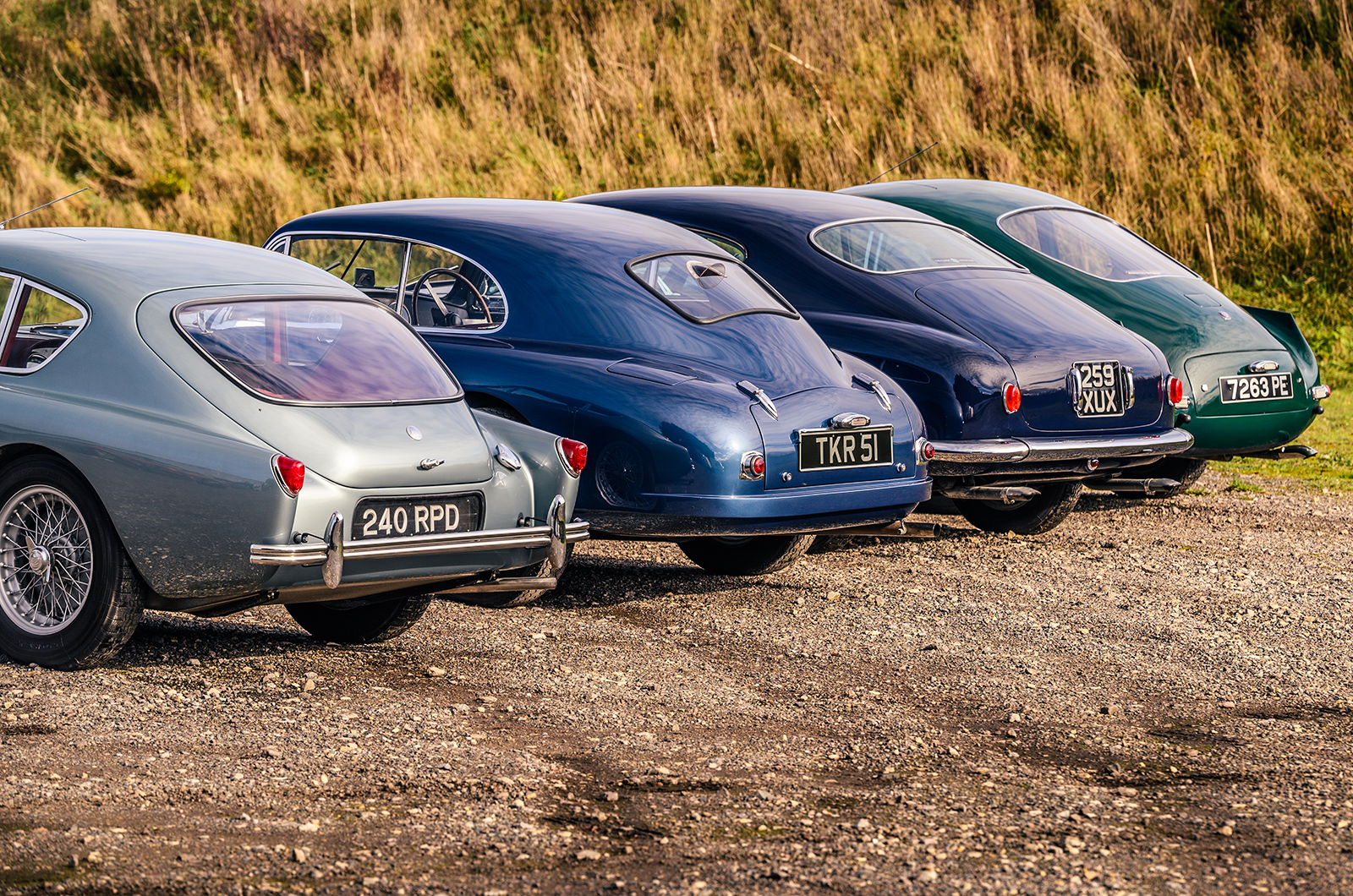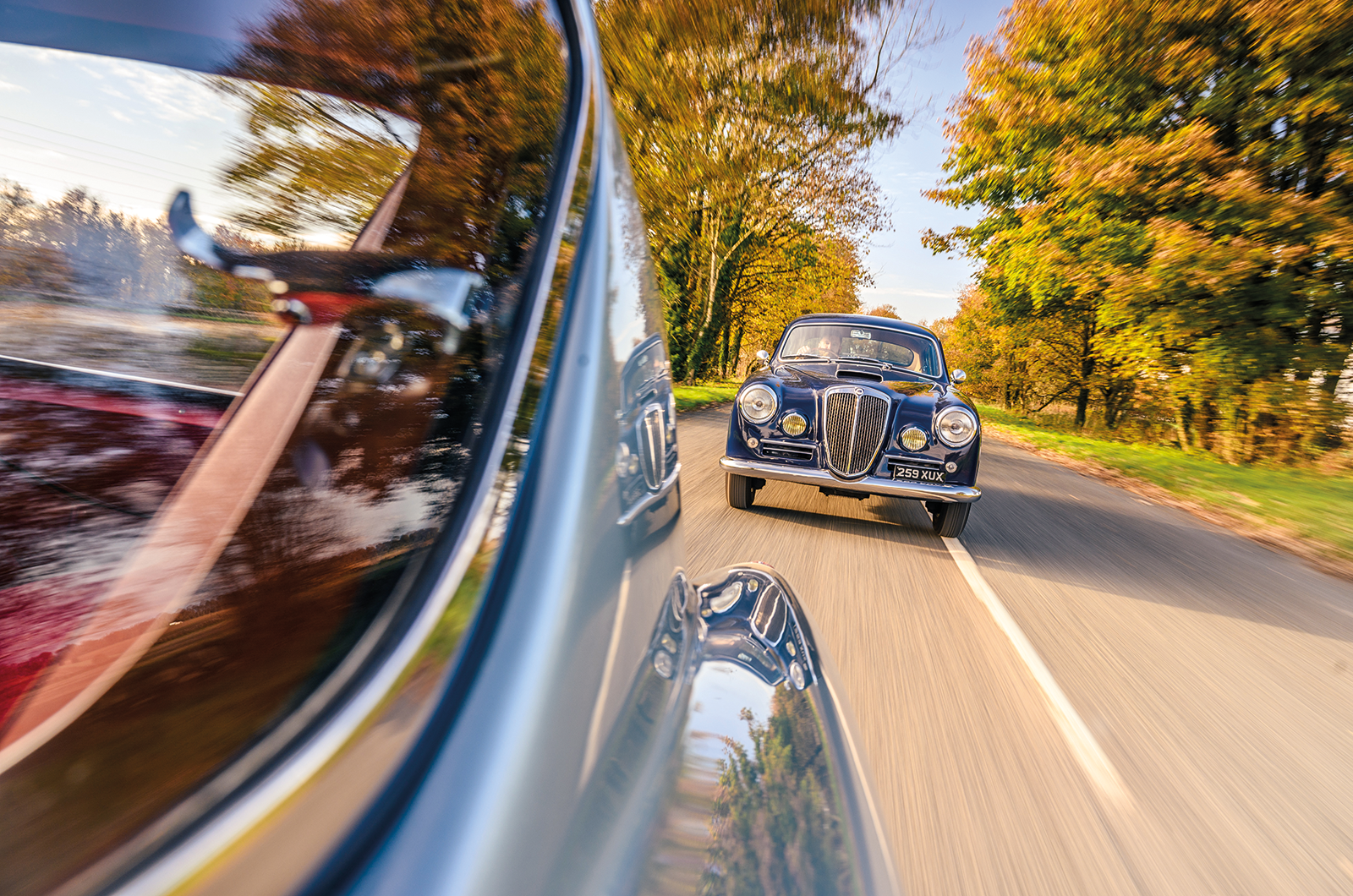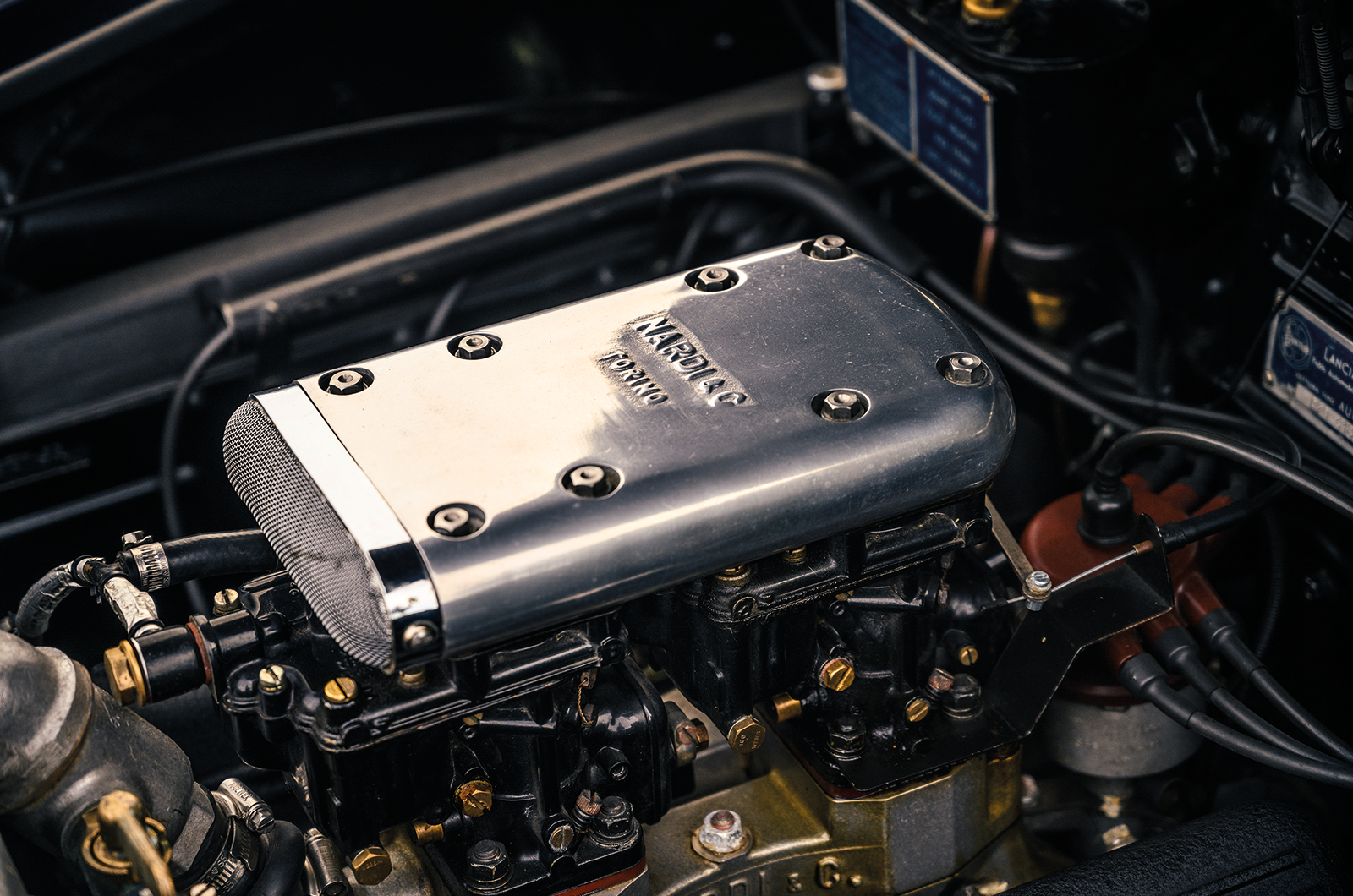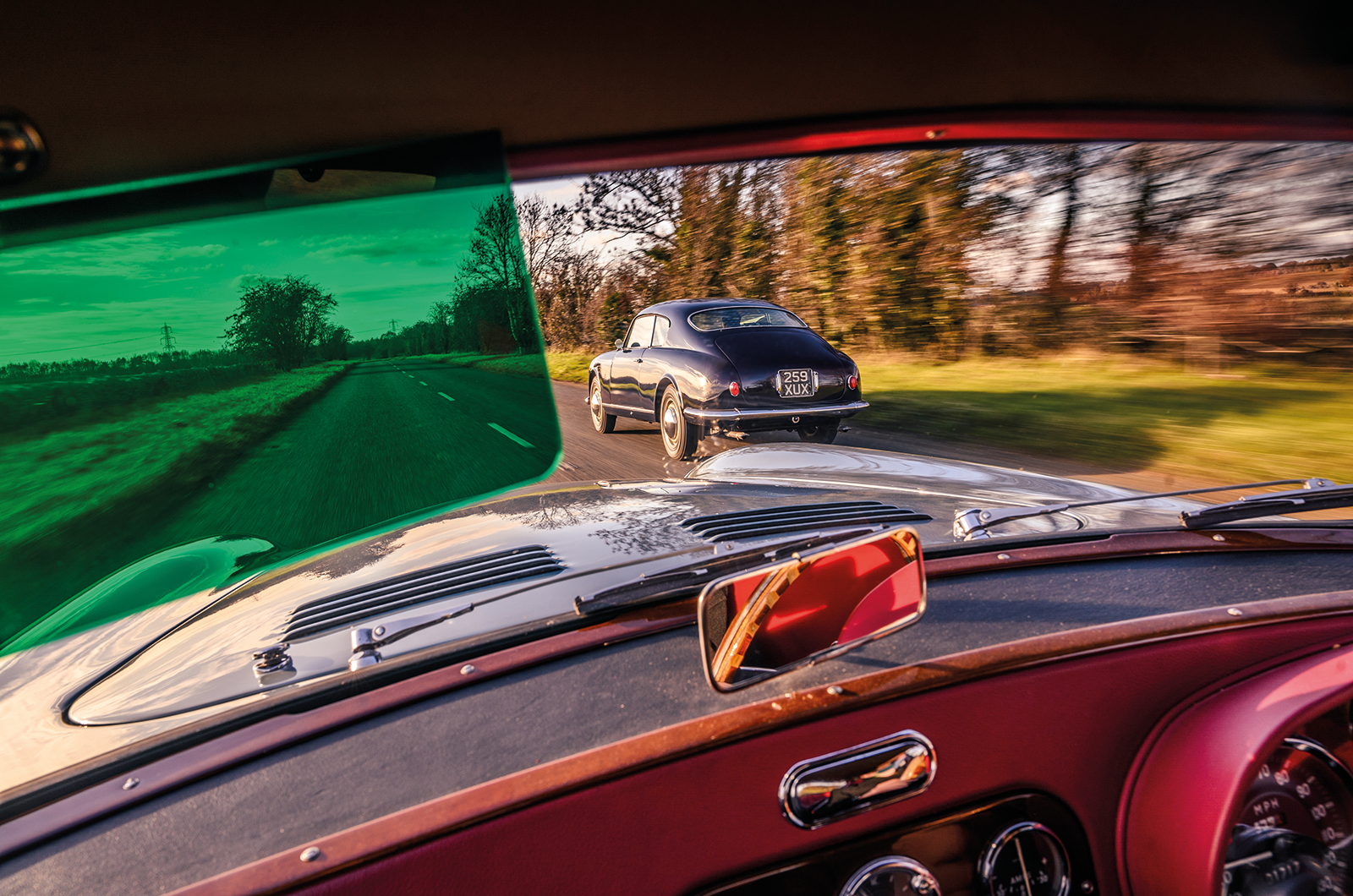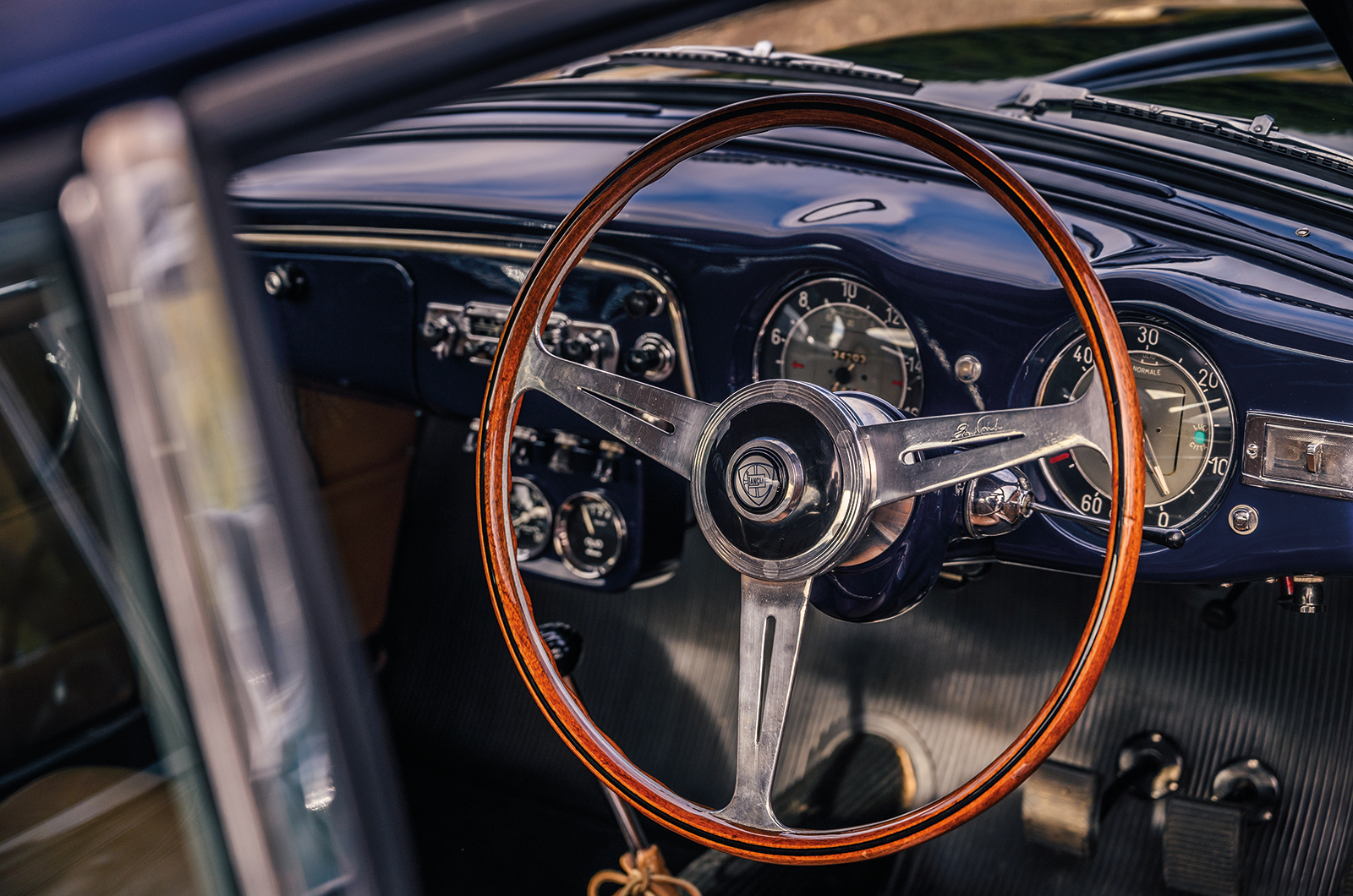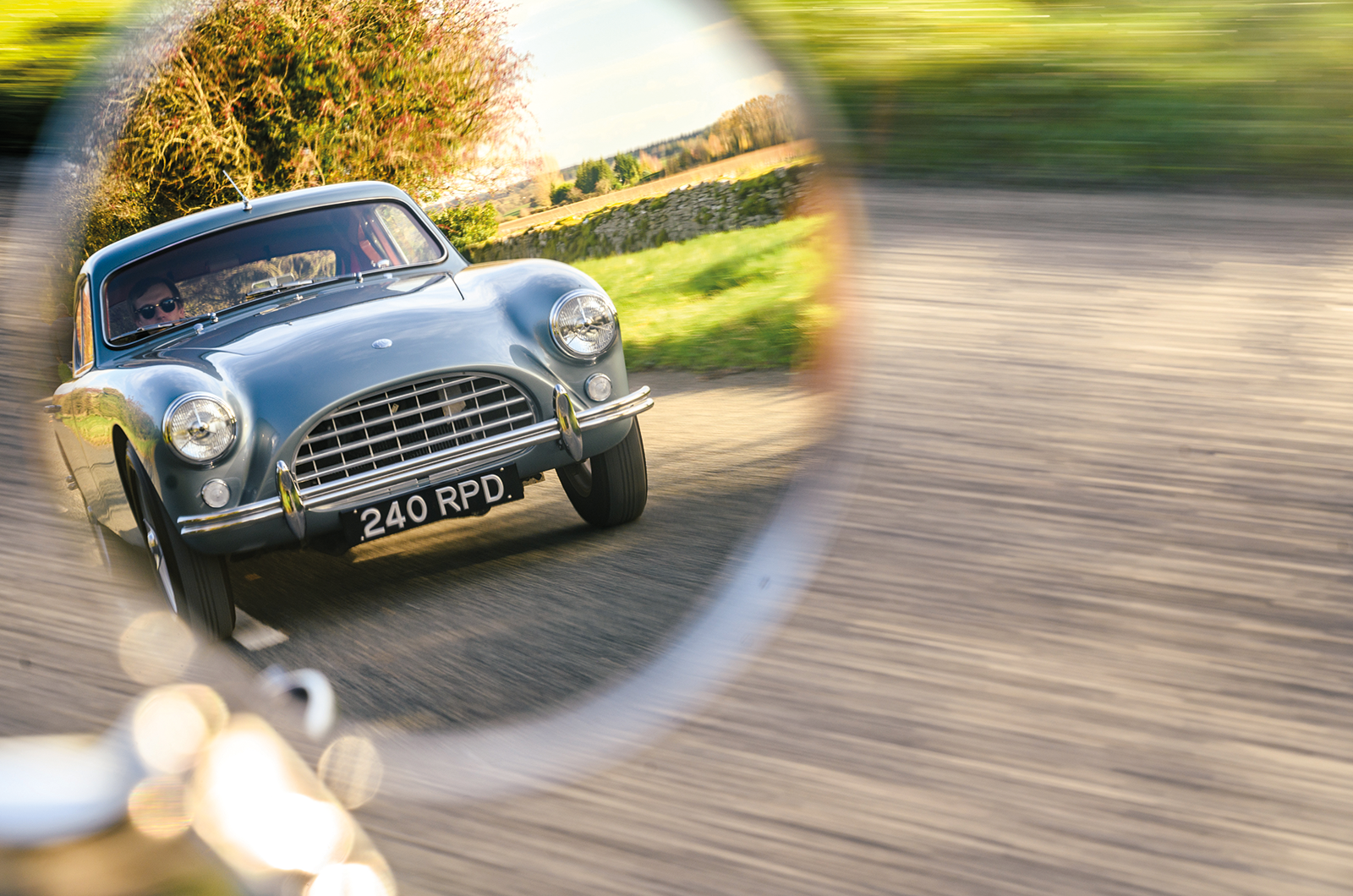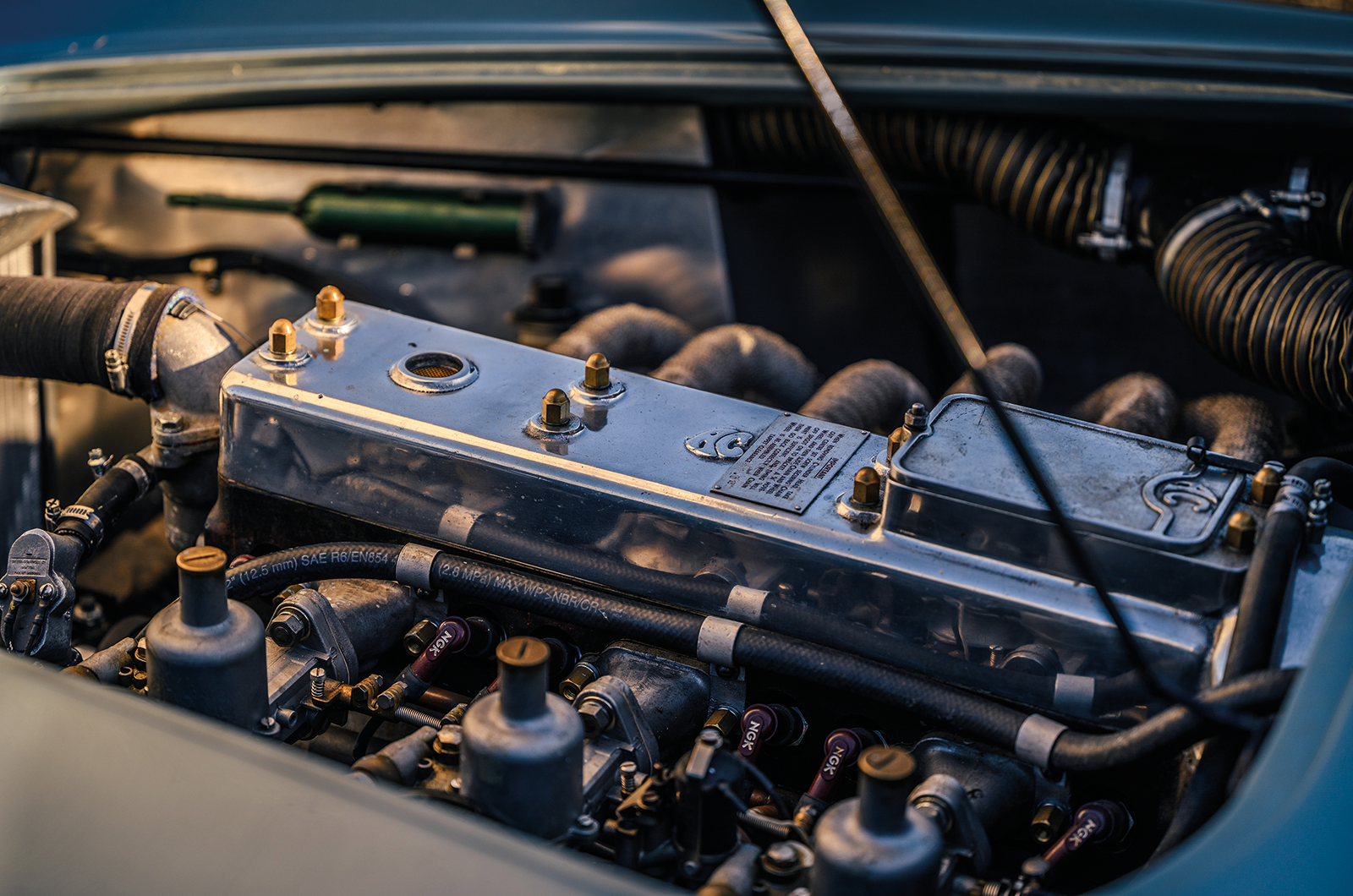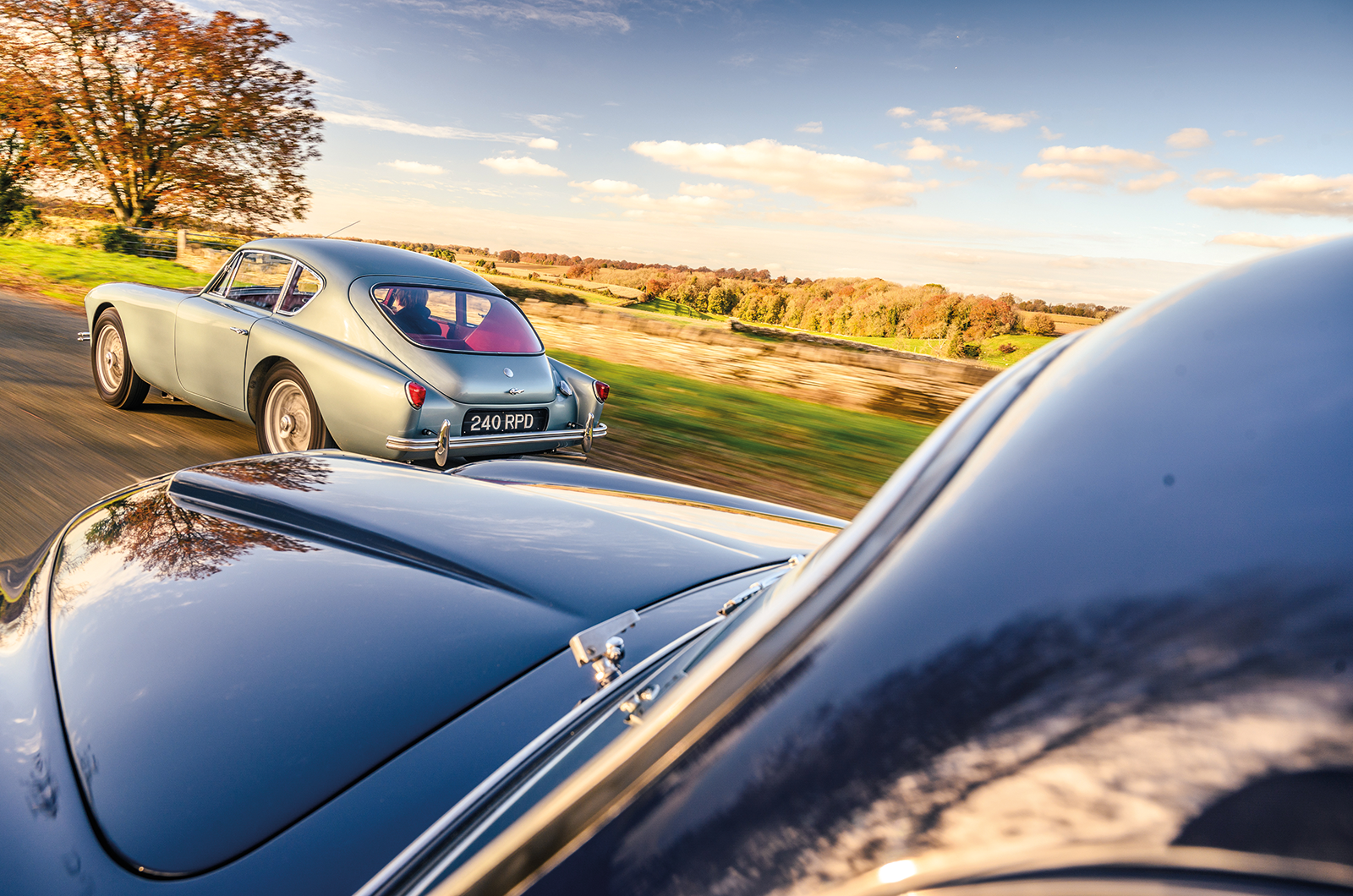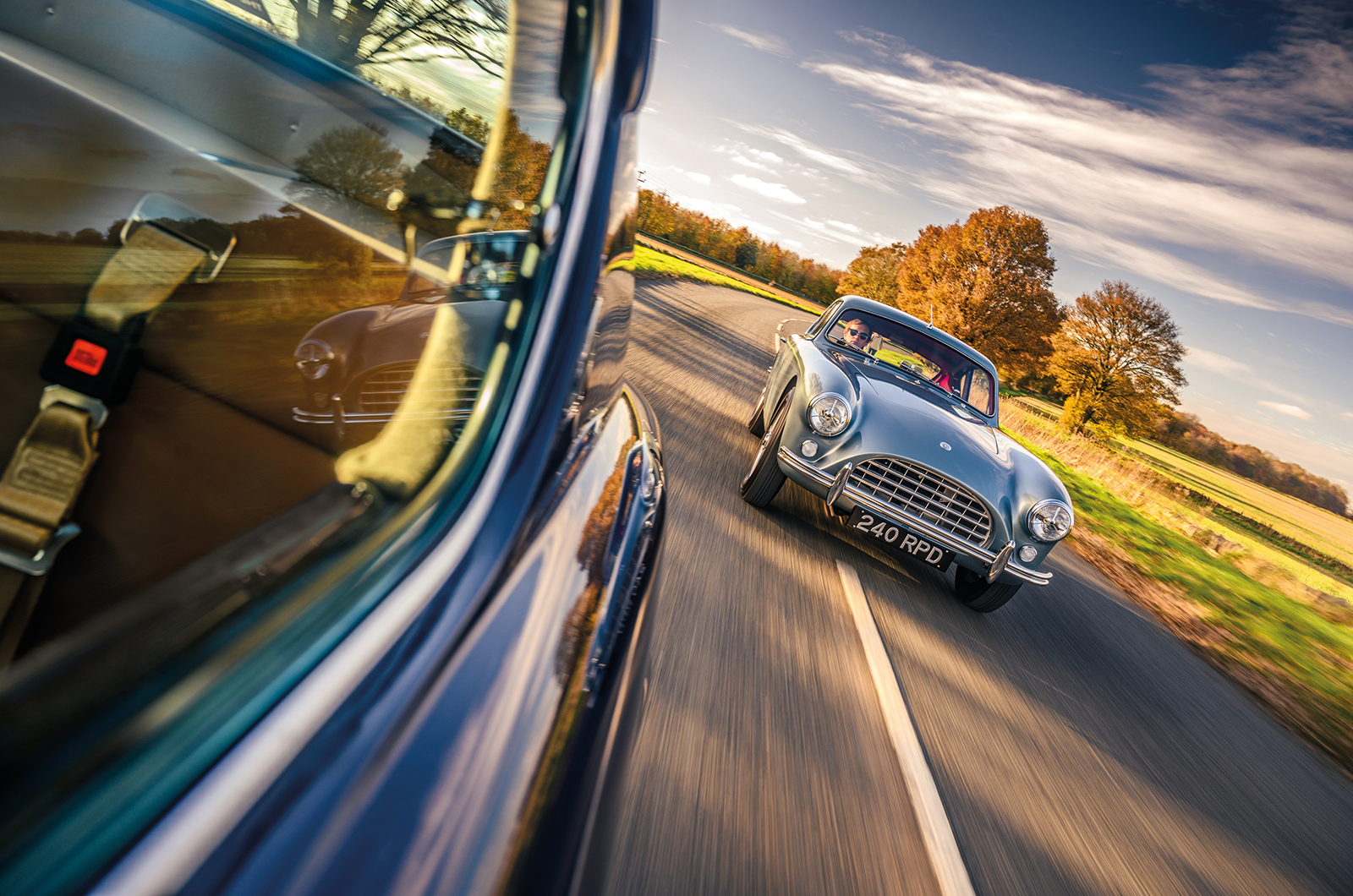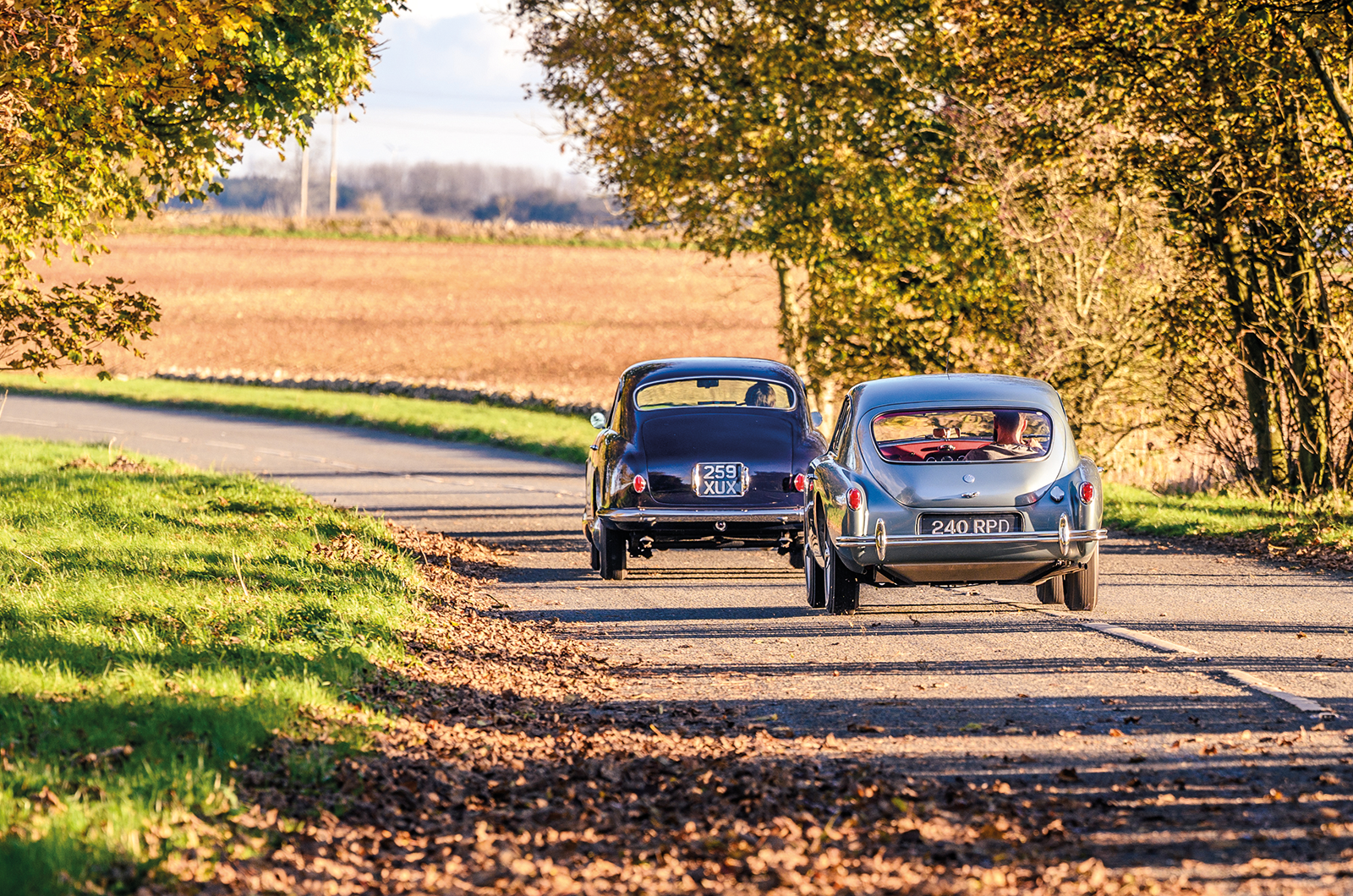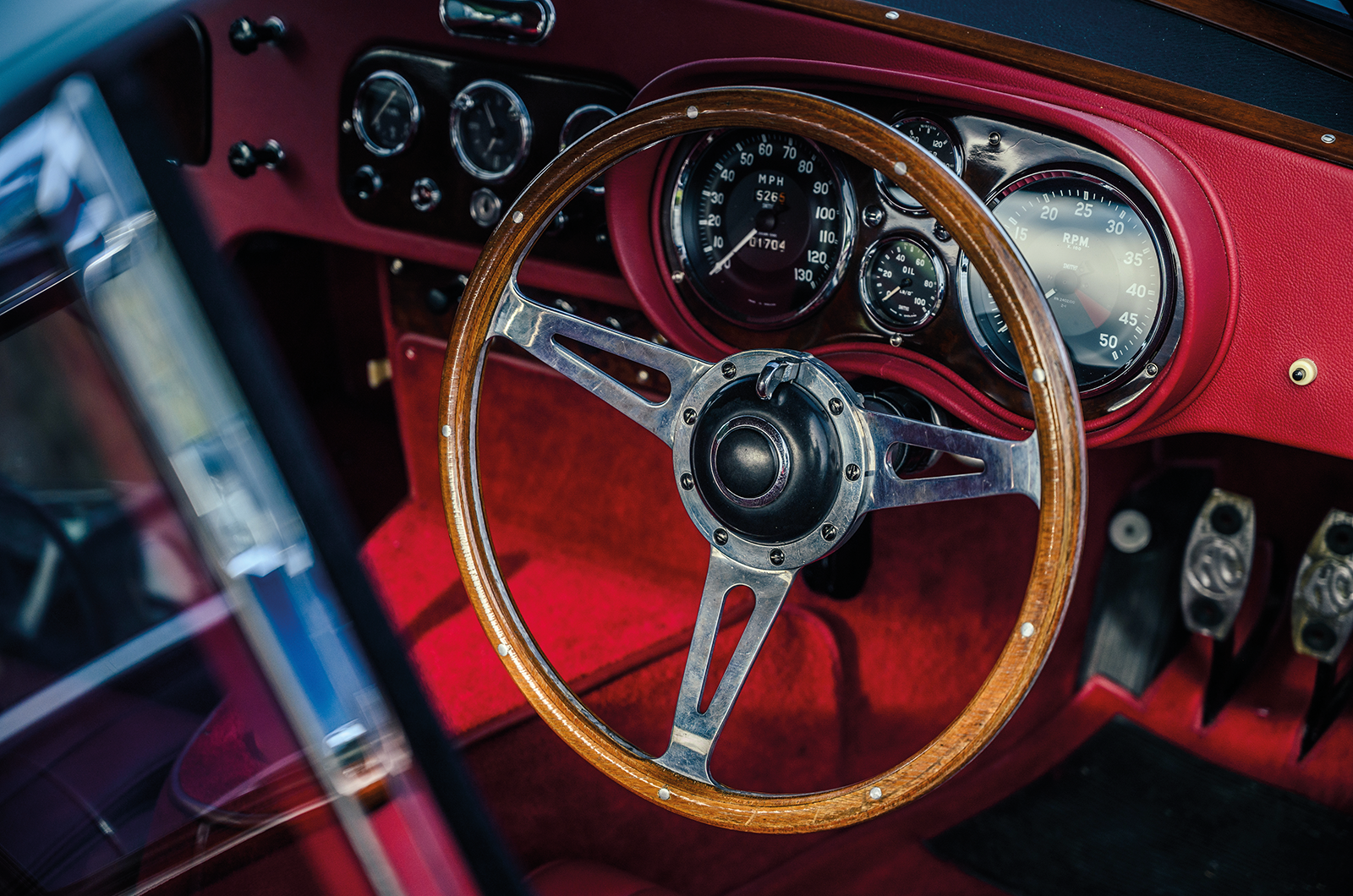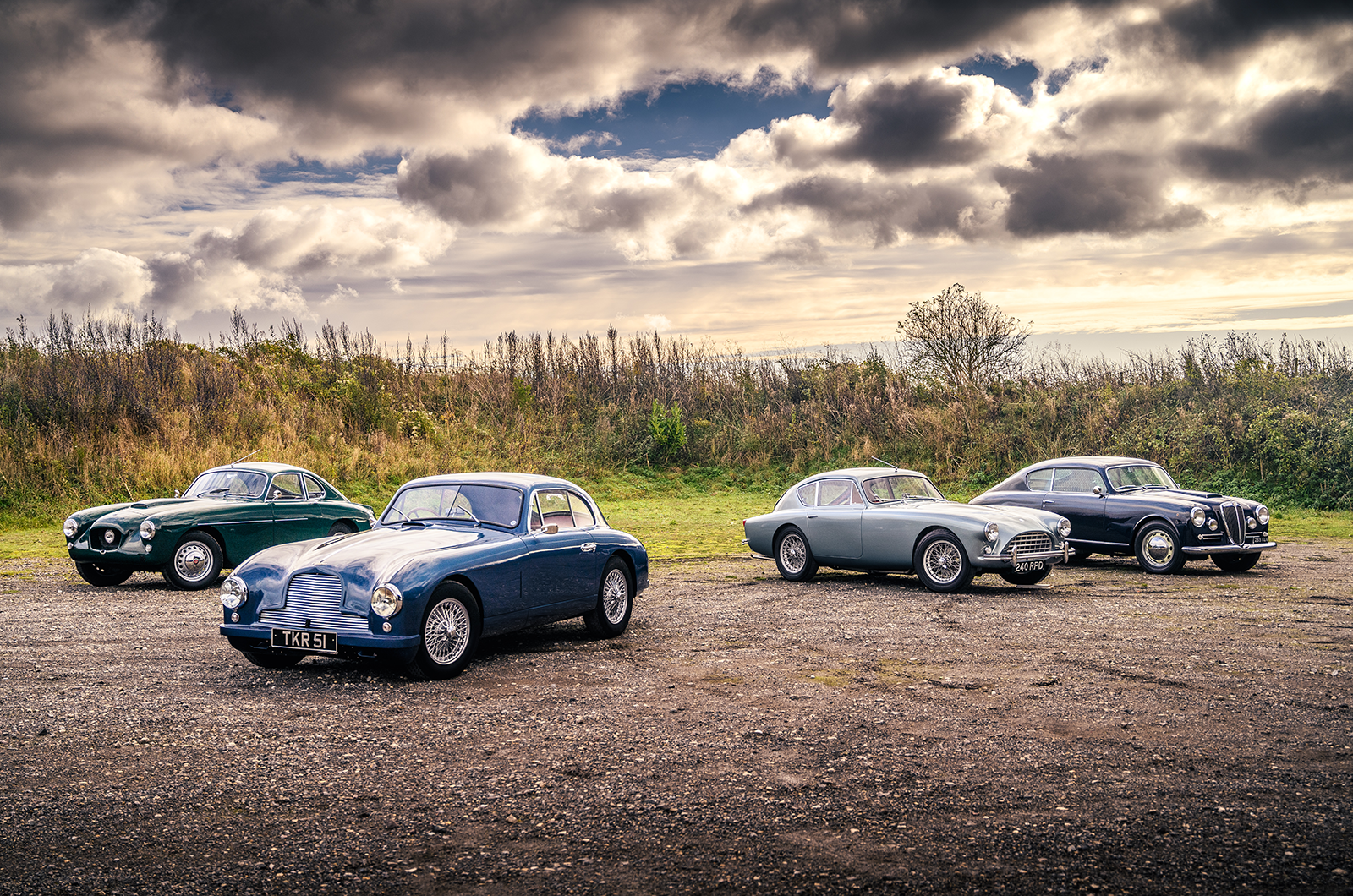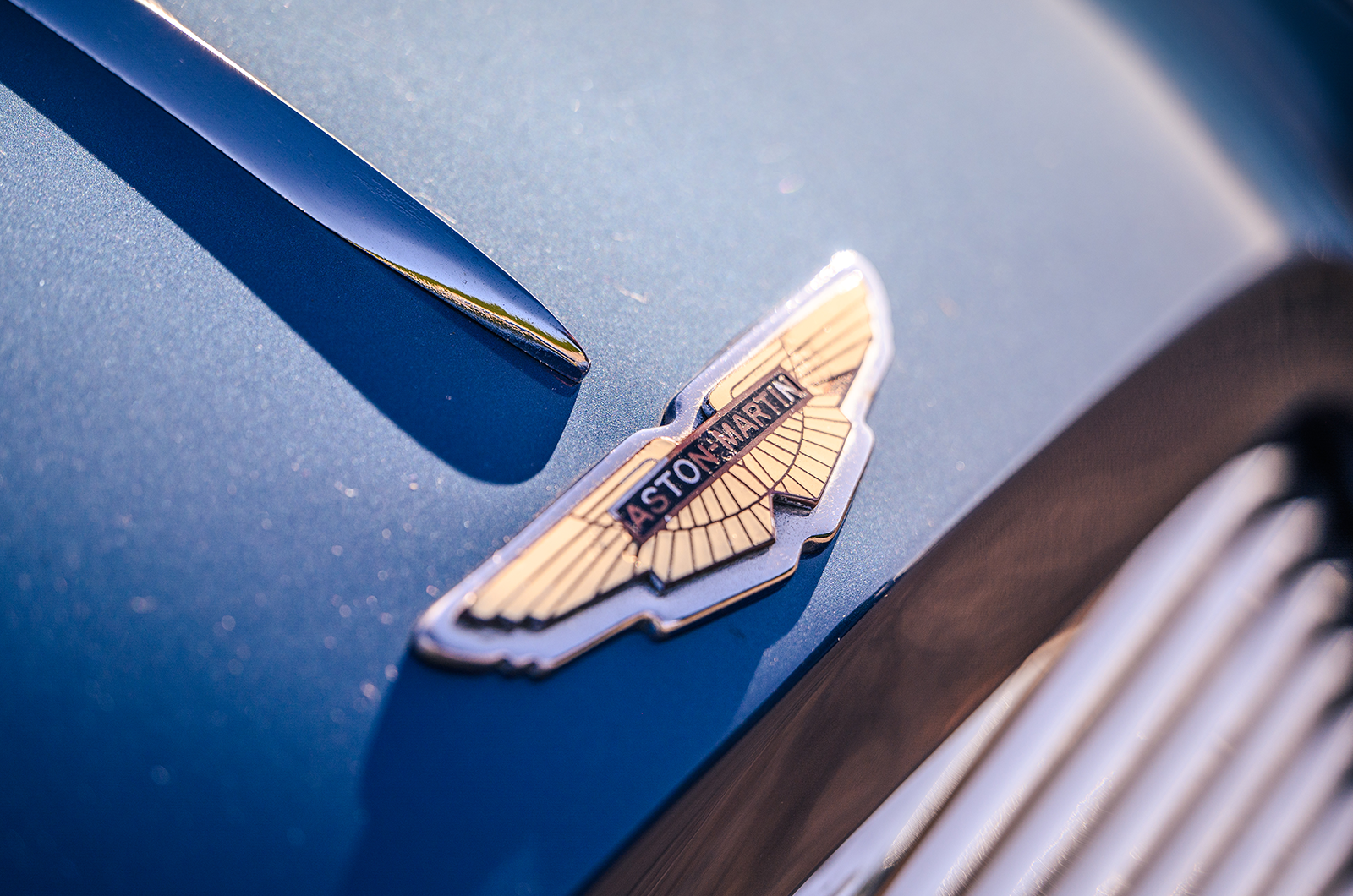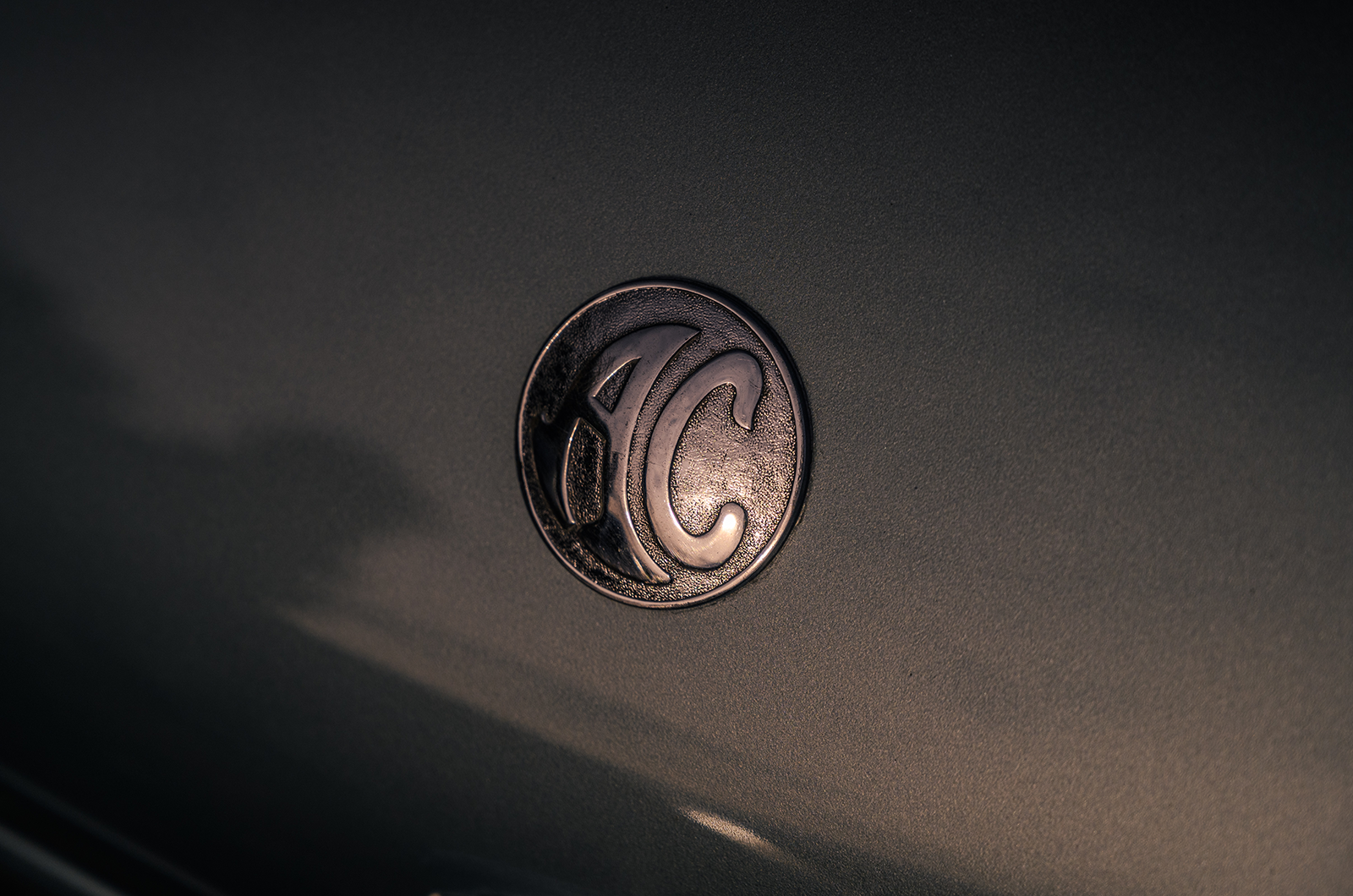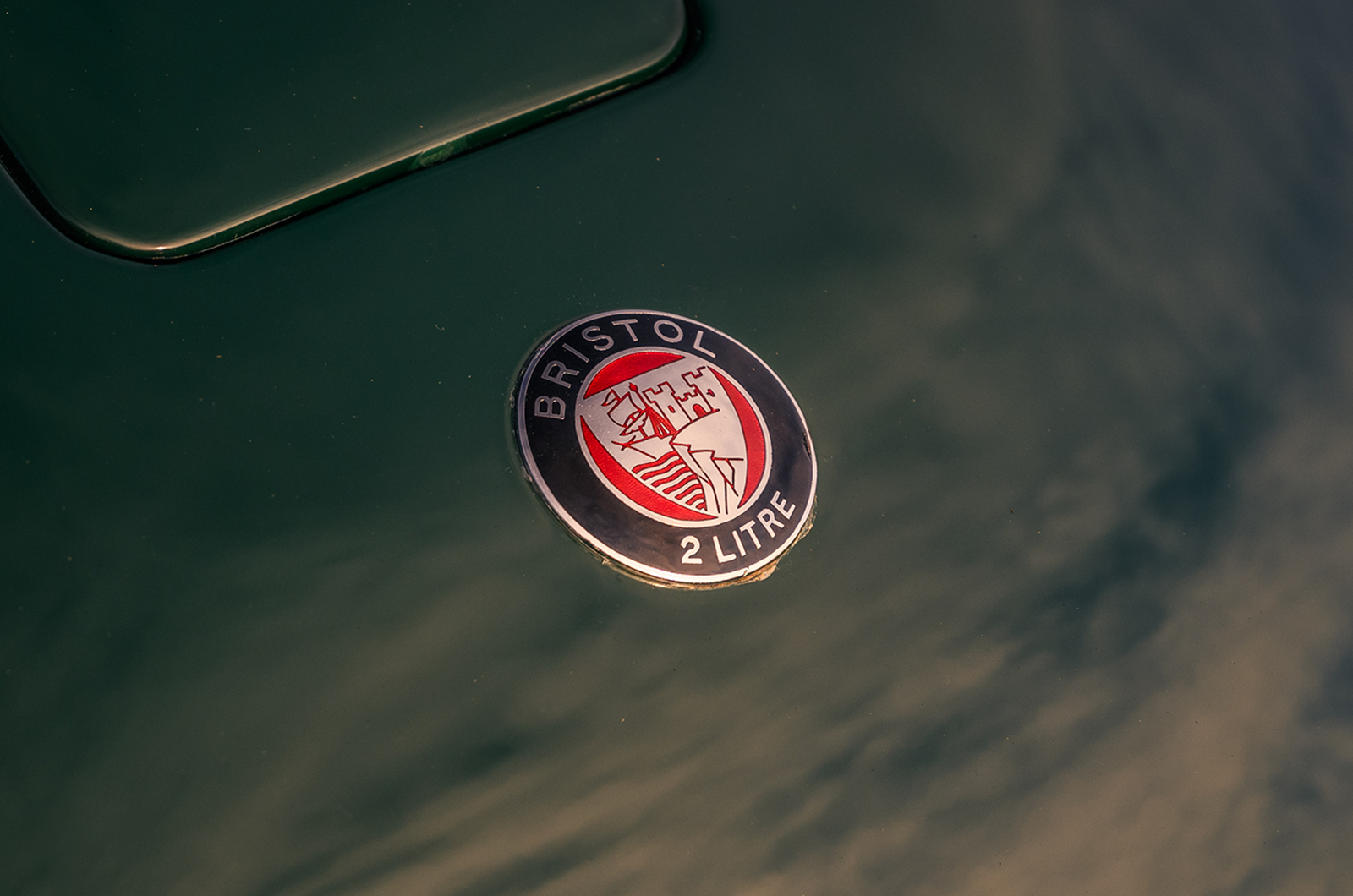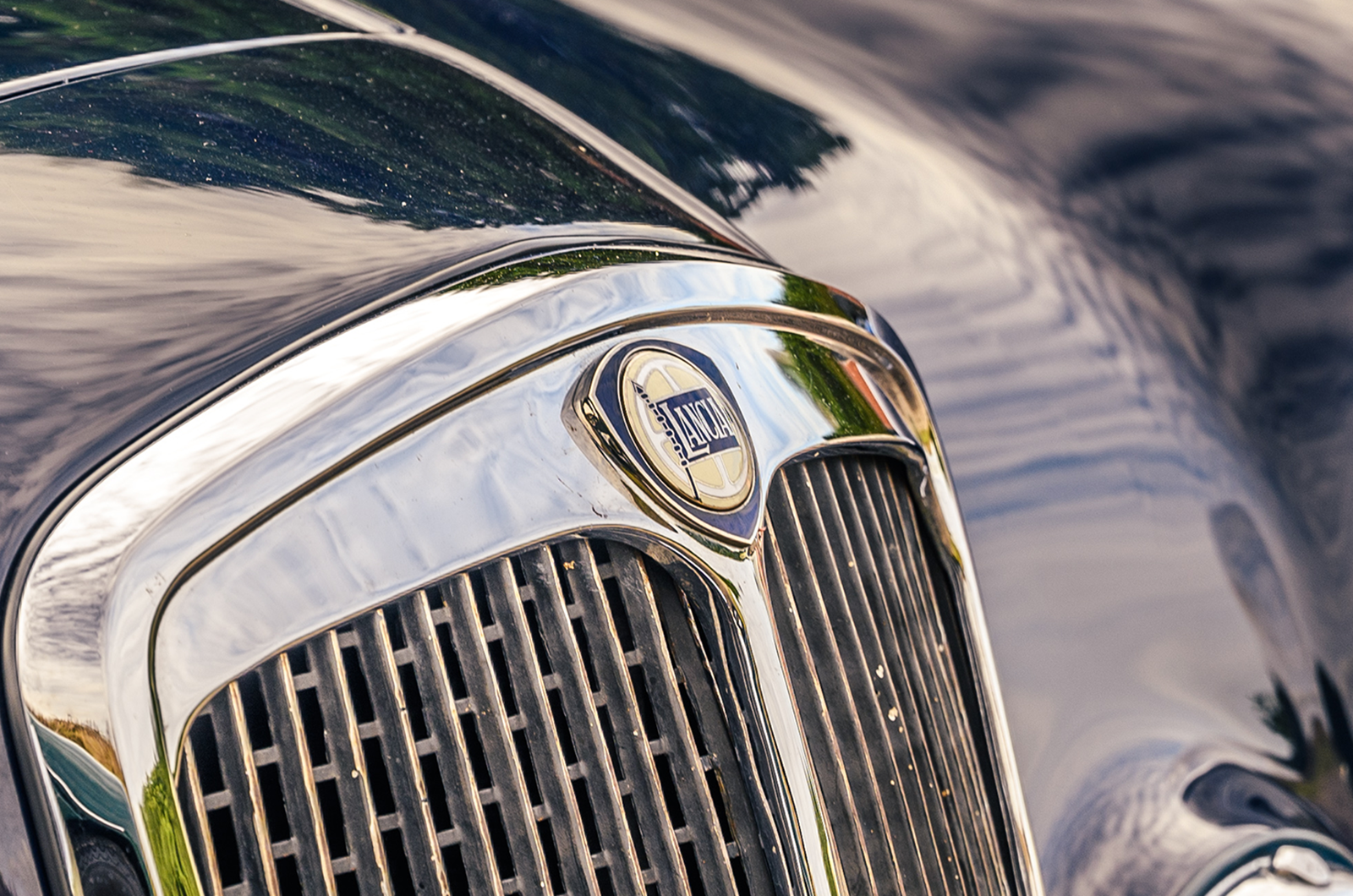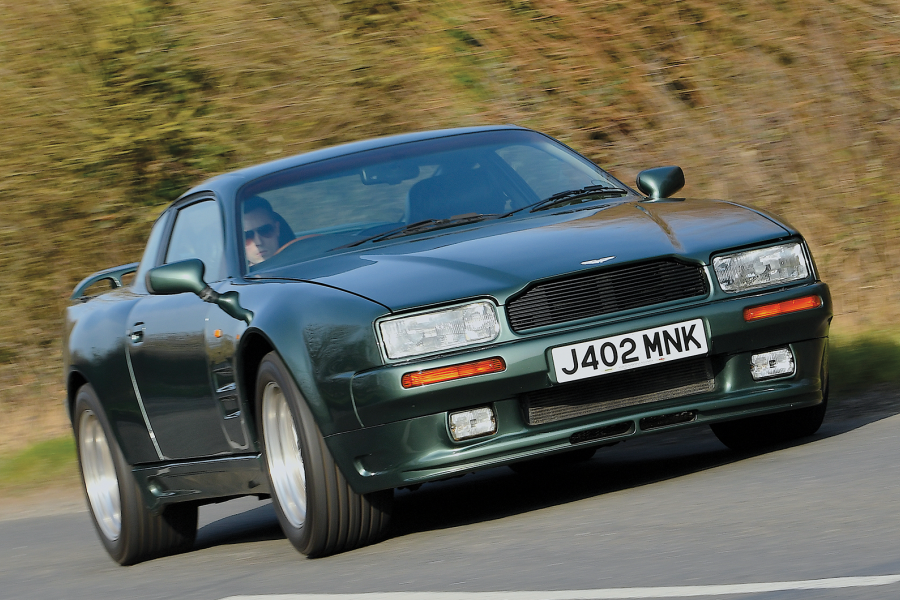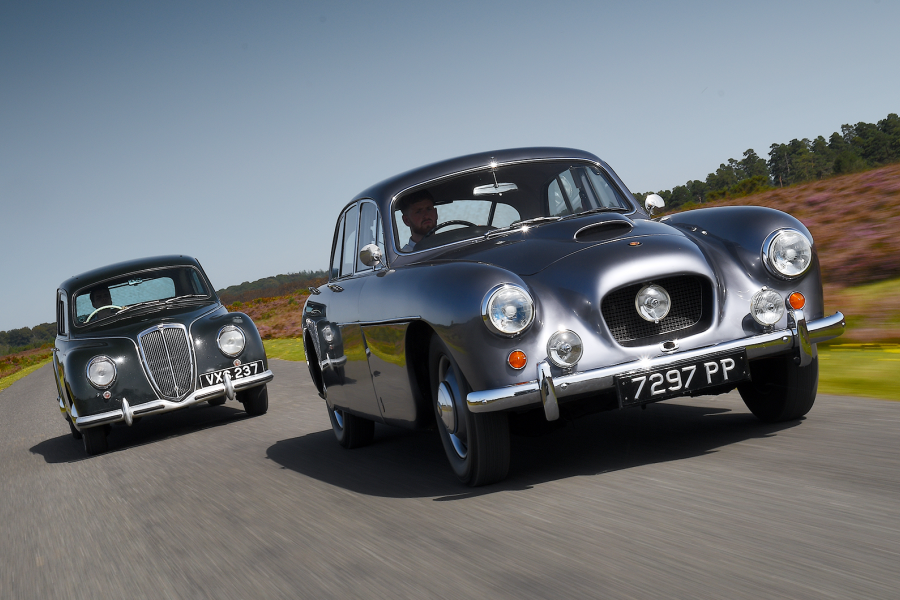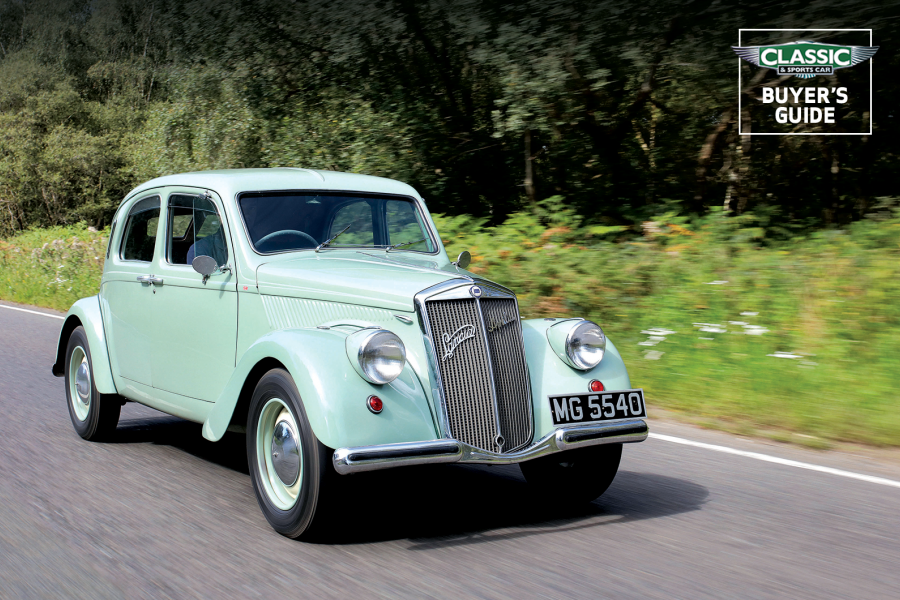A clever rear transaxle was joined by unitary construction in a landscape still dominated by separate chassis, and the world’s first production V6: a 60º 1569cc gem with hemispherical combustion chambers and in-line valves, developed in the immediate post-war years by Francesco de Virgilio.
By 1951 the entire range was fitted with an uprated 1991cc version of the powerplant, which resulted in sprightly performance in the lightweight GT – savings having been made by shortening the wheelbase by 8in.
The Series 2 soon arrived, followed closely by a third in 1953, which finally did away with the early car’s tailfins and brought with it a more powerful 2451cc version of the V6 engine.
The Lancia’s V6, here with a Nardi twin-Weber conversion
However, it is the fourth series, which made its debut in 1954, that represents the best of the breed, and cemented the model’s reputation as a fashion icon when it starred in Dino Risi’s enchanting Il Sorpasso in 1962.
The mid-1950s revamp built on the successes of the Series 3 while adding a number of its own improvements, most notably the change from semi-trailing arms to de Dion tube rear suspension.
Coupled with its radial tyres (the Aurelia was the first model to be so fitted from new), handling was much improved, allowing the driver to make the most of the potent 118bhp V6.
The Series 4 Aurelia was the first to be exported to the United States in serious numbers, but ‘our’ car is Italian through and through, having been registered in Milan before spending most of its life in northern Italy then making its way to the UK.
The large rear deck of the Lancia adds a high-set feel
Marque specialist Thornley Kelham was responsible for a light restoration that quickly blossomed into a full rebuild and, as well as a level of finish that would probably put the factory to shame, a number of useful modifications were made along the way.
Most notable is the gearchange, a period Nardi option that moved the selector from the column to the floor, and which suits a more involved driving style.
It’s a great rod of a lever with a beautifully turned knob, and but for the slightly rubbery bounce of a freshly built linkage it shifts quickly and smoothly, encouraging the sort of spirited sprint that brings to mind its dashing silver-screen appearance – though hopefully our drive won’t culminate in a fiery hilltop crash like the one in Il Sorpasso’s closing scenes.
A floor-mounted change is a common Lancia Aurelia upgrade
The Aurelia cuts across country with all the grace of a Riva motor launch cresting the waves of Lake Como, with a silky power delivery from that jewel of a V6 that comfortably outclasses its straight-six competition in terms of refinement.
Surprisingly, it’s also the car that garners the most attention out on the road.
It lures you in with that gorgeous baritone, before captivating with a level of fit and finish that surpasses each car in our set.
Everywhere you look are gorgeous features designed and built with care, from the beautiful, bold dials that resemble a high-end watch face to the delicate window winders, hinged so they don’t catch your trousers.
Figure-hugging bucket seats complete a package that is difficult not to fall for completely.
The AC has a similar shape to the Aston Martin
Look at these four coupés in isolation and it’s difficult to get a sense of scale, such is the neatness of each design.
But take them as a whole and it’s the AC Aceca that is notable for its low, sleek and streamlined shape.
It undoubtedly shares a common design language with the Aston, as well as a useful and attractive hatchback to the rear, but, being based on the fleet-of-foot Ace, its tight aluminium bodywork makes for a more dainty machine.
A lightweight one, too: a combination of tubular chassis, thin-skinned wood-framed doors and a svelte footprint give it a 200kg-plus advantage over the more powerful Aston, which is realistically the closest rival among our British and Italian exotics.
The AC unit traces its heritage as far back as the 1920s, here with triple SUs
The Aceca would be powered by a number of engines in its nine years, including the same 100B Bristol engine found in the 404 and a beefy 2.6-litre Ford Zephyr ‘six’ breathed on by Ken Rudd, but it’s the Thames Ditton firm’s own 1991cc overhead-cam straight-six carried straight over from the Ace in 1954 that features in this example.
While it lacks the outright power of the later engines, you would be hard pressed to guess that the aluminium AC block design dates back to 1922.
Just as 50:50 weight distribution and delightfully predictable handling flatter the driver, the low kerbweight similarly enhances the engine, which despite only producing 85bhp feels truly alive with a free-revving nature and wonderfully sharp throttle response.
Clockwise from top: like the DB2, the Aceca has a hatchbacked rear; diminutive AC chases classy Lancia; “the mellifluous burble turns into something of a roar, an aural treat that only adds to the overall experience”
The trio of SU carburettors certainly helps in that department, and the soundtrack is made up of the whoosh of air guzzled by the intakes and a crisp exhaust note that permeates the bright cabin.
Allow the revs to rise and the mellifluous burble turns into something of a roar, an aural treat that only adds to the overall experience.
The car’s first owner, amateur racer TA Alston, would have been no stranger to the Aceca’s straight-six having swapped his 2 Litre saloon in part-exchange, and he would surely have found the engine a more fitting pairing with the little coupé.
Curiously, Alston specified that the handbrake was located on the right-hand side of the Aceca’s cabin – proof that the marque still maintained some of the bespoke traditions that were beginning to disappear as manufacturers made the transition to scaled production after the war.
There is a more sporting feel in the AC Aceca’s bright cabin
Though all four cars attempt to elbow their way into a similar niche, each has a character and approach all of its own.
In Vantage spec, the Aston is the brute, favouring power over delicate handling. The Bristol is the sophisticated eccentric, with a shape you either love or hate, while the AC’s low weight, sharp steering and sweet handling make it the driver’s favourite.
Which you prefer from the British trio depends very much on your priorities.
The Aceca would narrowly edge ahead for me, but by opening up the options to include the Continental offering, the Lancia would come out on top.
A fabulous quartet
The Aurelia can be bested by each of the Brits in a number of areas, but it’s the Italian car that proves the best all-rounder: a wonderful combination of everyday practicality and performance that helped the model conquer everything from the fashion world to the Mille Miglia.
Even in such illustrious company, Jano’s masterpiece stands out from the crowd.
Images: Olgun Kordal
Thanks to The Classic Motor Hub
Factfiles
Bristol 404
- Sold/number built 1953-’56/52
- Construction A-frame box-section chassis with integral floors and propshaft tunnel; steel, wood and aluminium composite body
- Engine iron-block, alloy-head, cross-pushrod overhead-valve 1971cc straight-six, triple Solex 32 BI carburettors
- Max power 105bhp @ 5000rpm
- Max torque 123lb ft @ 3750rpm
- Transmission four-speed manual with freewheel, RWD
- Suspension: front independent, by upper wishbones, transverse leaf spring, anti-roll bar rear live axle, longitudinal torsion bars, lateral links, A-bracket; telescopic dampers f/r
- Steering rack and pinion
- Brakes dual-circuit drums
- Length 14ft 3¼in (4350mm)
- Width 5ft 8in (1727mm)
- Height 4ft 7¾in (1416mm)
- Wheelbase 8ft ¼in (2445mm)
- Weight 2296lb (1041kg)
- 0-60mph 14.4 secs
- Top speed 113mph
- Mpg 22.3
- Price new £3542 (1953)
- Price now £150-250,000*
Lancia Aurelia B20 GT
- Sold/number built 1950-’58/18,197
- Construction steel monocoque
- Engine all-alloy, ohv 2451cc 60º V6, twin-choke Weber carburettor
- Max power 118bhp @ 5000rpm
- Max torque 134Ib ft @ 3500rpm
- Transmission four-speed manual transaxle, synchromesh on top three ratios, RWD
- Suspension: front independent. by sliding pillars, coil springs rear de Dion axle, leaf springs, Panhard rod; telescopic dampers f/r
- Steering worm and sector
- Brakes drums, inboard at rear
- Length 14ft 4in (4369mm)
- Width 5ft 1in (1549mm)
- Height 4ft 5½in (1359mm)
- Wheelbase 8ft 8in (2642mm)
- Weight 2888lb (1310kg)
- 0-60mph 14 secs
- Top speed 110mph
- Mpg 24
- Price new £3471 (1955)
- Price now £150-250,000*
Aston Martin DB2 Vantage
- Sold/number built 1950-’53/409
- Construction steel cruciform chassis with cast aluminium sills and door pillars, aluminium body
- Engine all-iron, dohc 2580cc straight-six, two1¾in SU carburettors
- Max power 125bhp @ 5000rpm
- Max torque 144lb ft @ 2400rpm
- Transmission all-synchromesh four-speed manual, RWD
- Suspension: front independent, by trailing links, telescopic dampers, anti-roll bar rear live axle, radius arms, Panhard rod, lever-arm dampers; coil springs f/r
- Steering worm and roller
- Brakes drums
- Length 13ft 6½in (4130mm)
- Width 5ft 5in (1650mm)
- Height 4ft 5½in (1360mm)
- Wheelbase 8ft 3in (2510mm)
- Weight 2452lb (1112kg)
- 0-60mph 11.1 secs
- Top speed 117mph
- Mpg 20.1
- Price new £2000 (1950)
- Price now £200-350,000*
AC Aceca
- Sold/number built 1954-’63/151
- Construction tubular steel two-rail chassis, aluminium body over thin tubular steel frame
- Engine all-alloy, sohc 1991cc straight-six, triple 1¼in SU carbs
- Max power 85bhp @ 4500rpm
- Max torque 105lb ft @ 2750rpm
- Transmission four-speed manual, optional overdrive, RWD
- Suspension transverse leaf spring, lower wishbones, telescopic dampers f/r
- Steering cam and gear
- Brakes Al-fin drums, optional front discs
- Length 12ft 8in (3860mm)
- Width 4ft 11in (1500mm)
- Height 4ft 1in (1245mm)
- Wheelbase 7ft 6in (2285mm)
- Weight 1960lb (891kg)
- 0-60mph 13.4 secs
- Top speed 103mph
- Mpg 20
- Price new £1651 (1956)
- Price now £100-160,000*
*Prices correct at date of original publication
READ MORE
From the past with presence: Bristol 405 vs Lagonda 3 Litre
Troubled succession: Lancia Aurelia and Lancia Flaminia
Building the perfect Aston Martin DBS V8
Greg MacLeman
Greg MacLeman is a contributor to and former Features Editor of Classic & Sports Car, and drives a restored and uprated 1974 Triumph 2500TC
